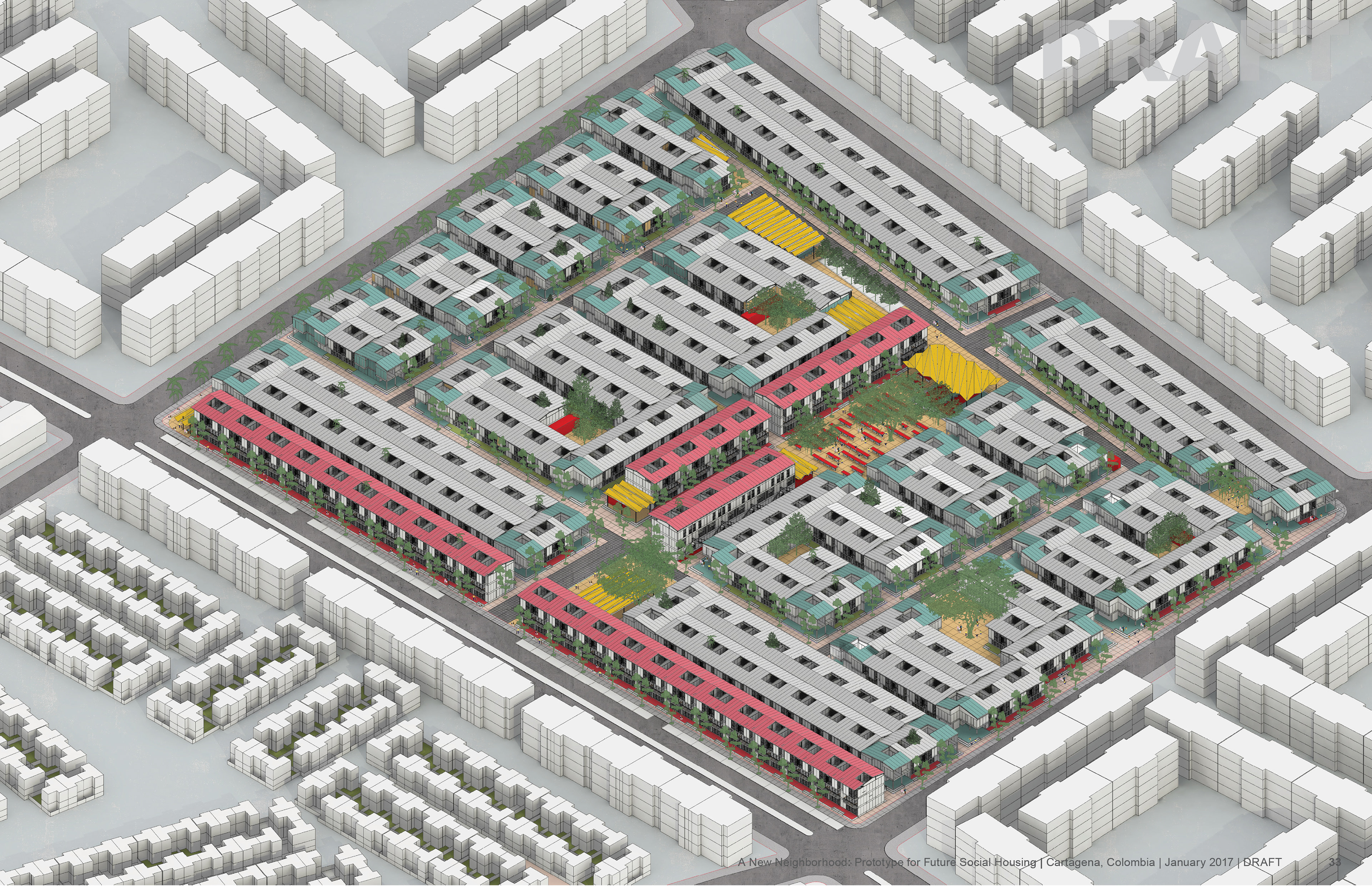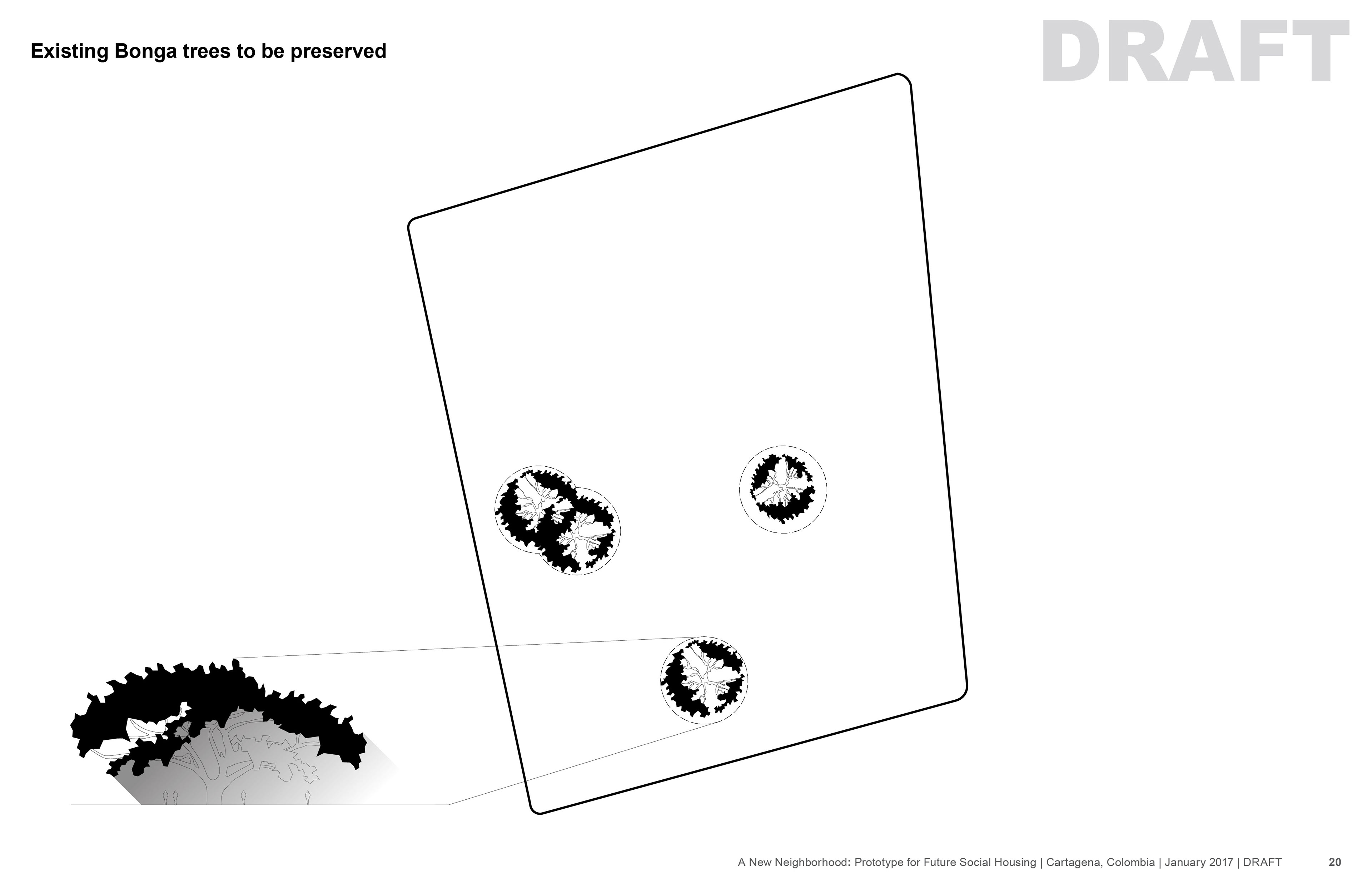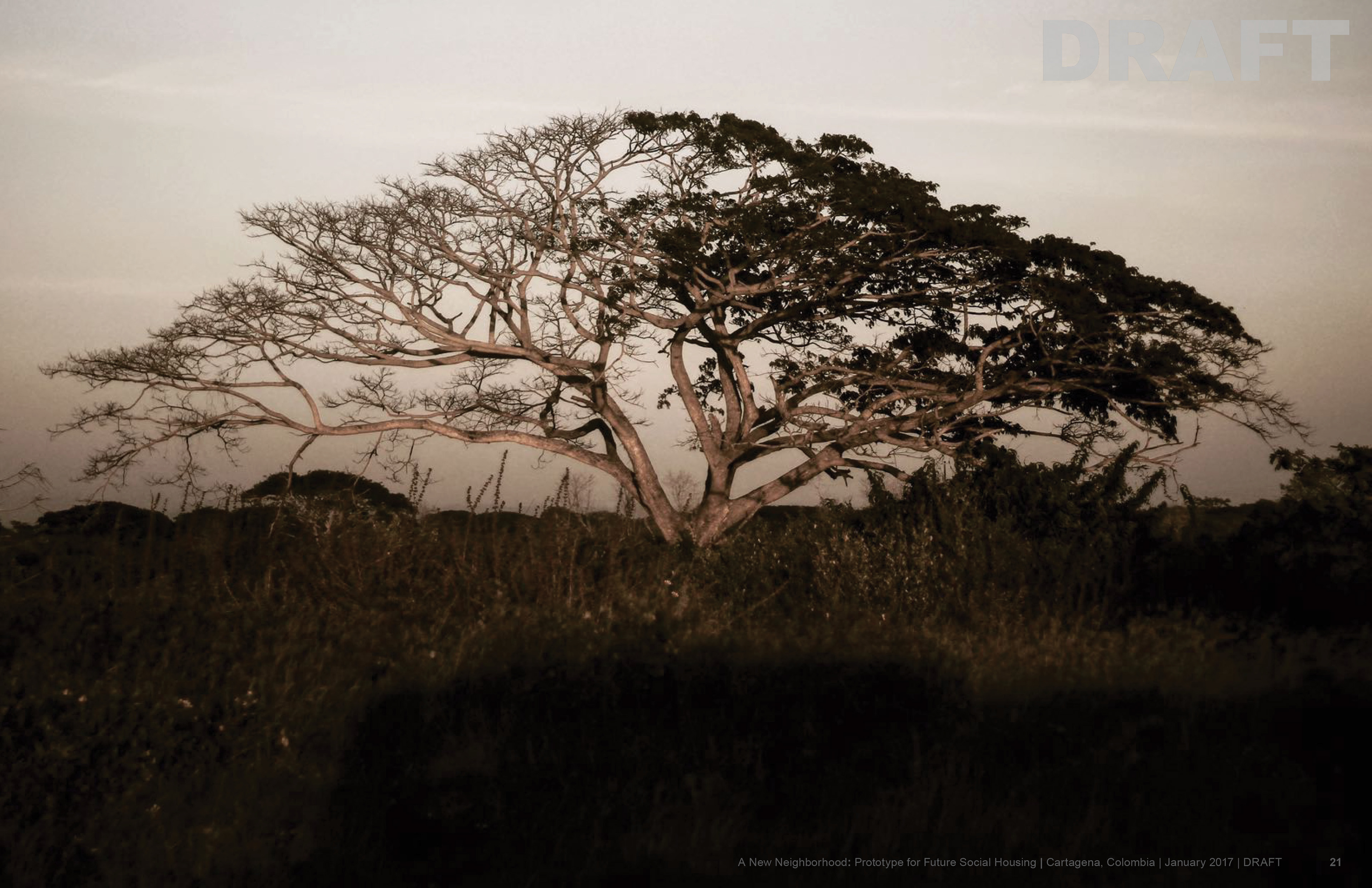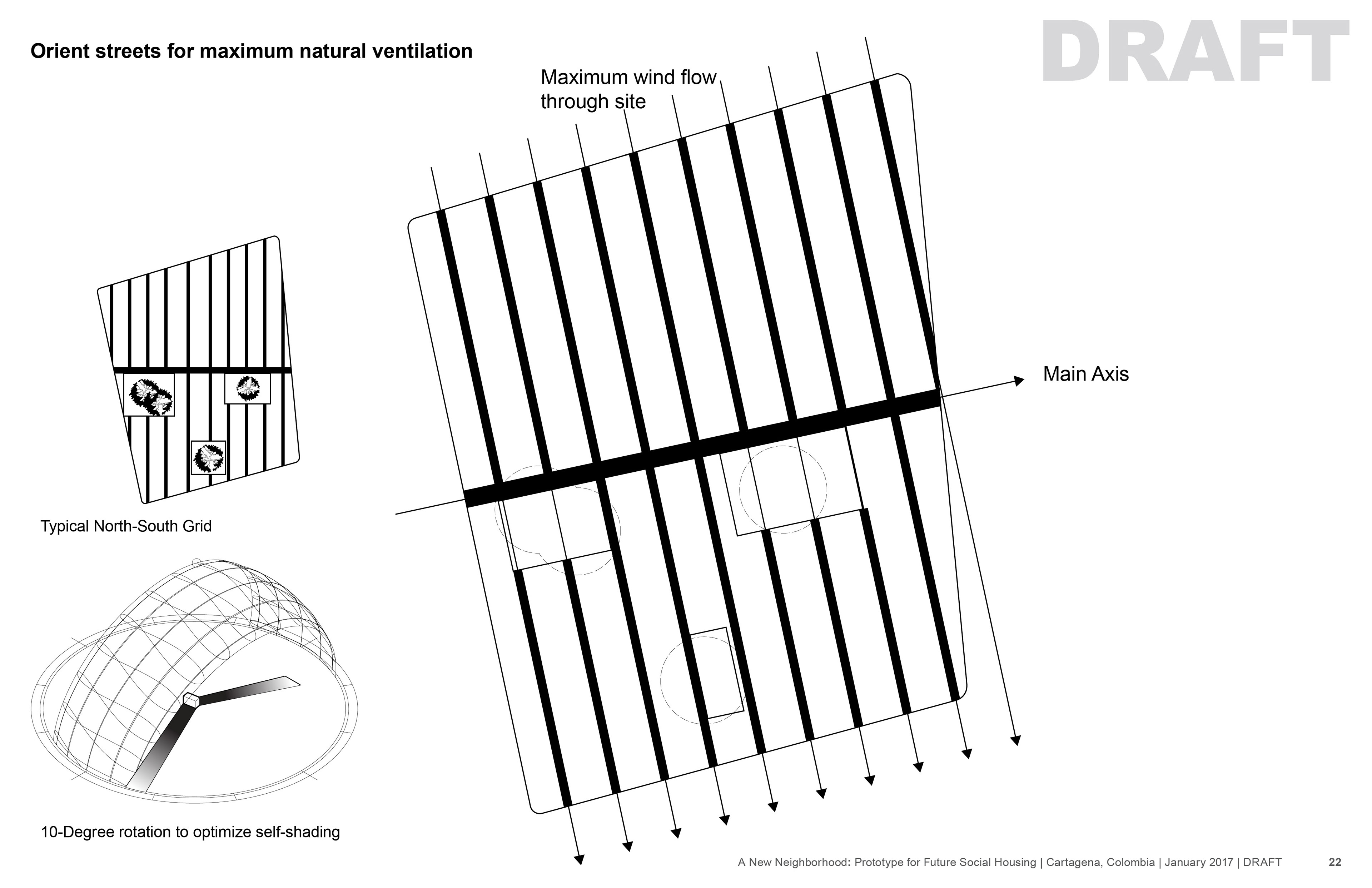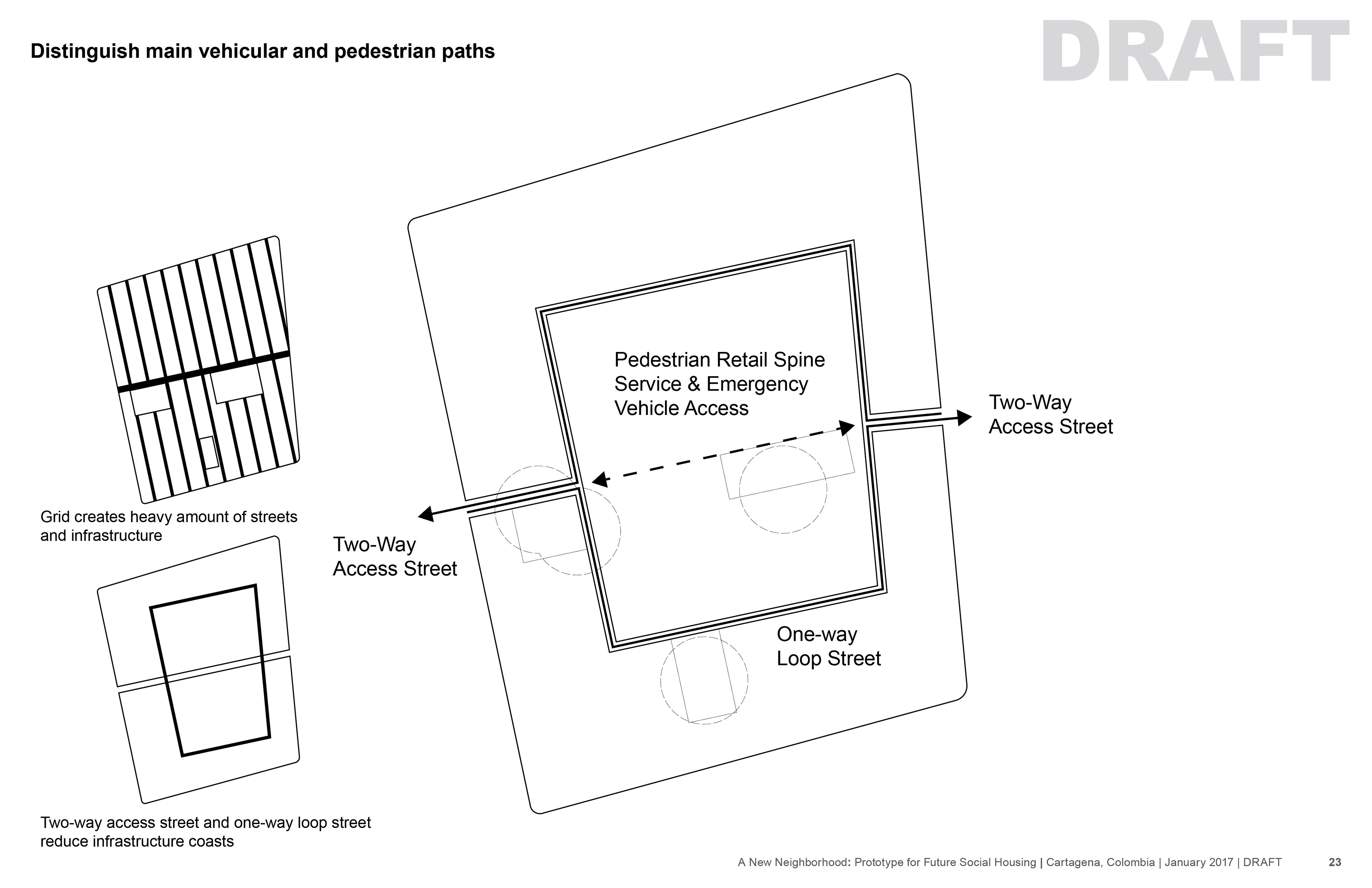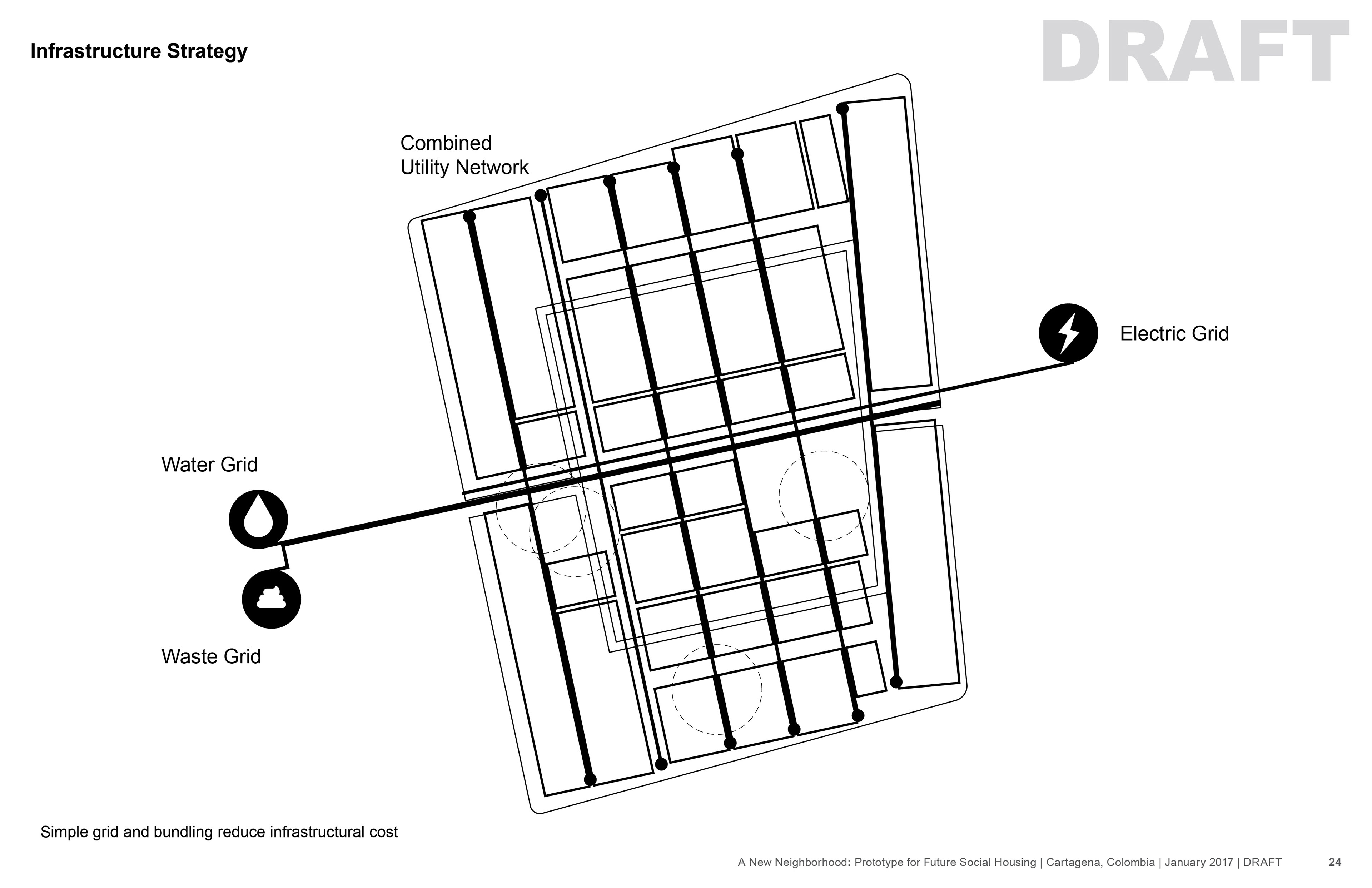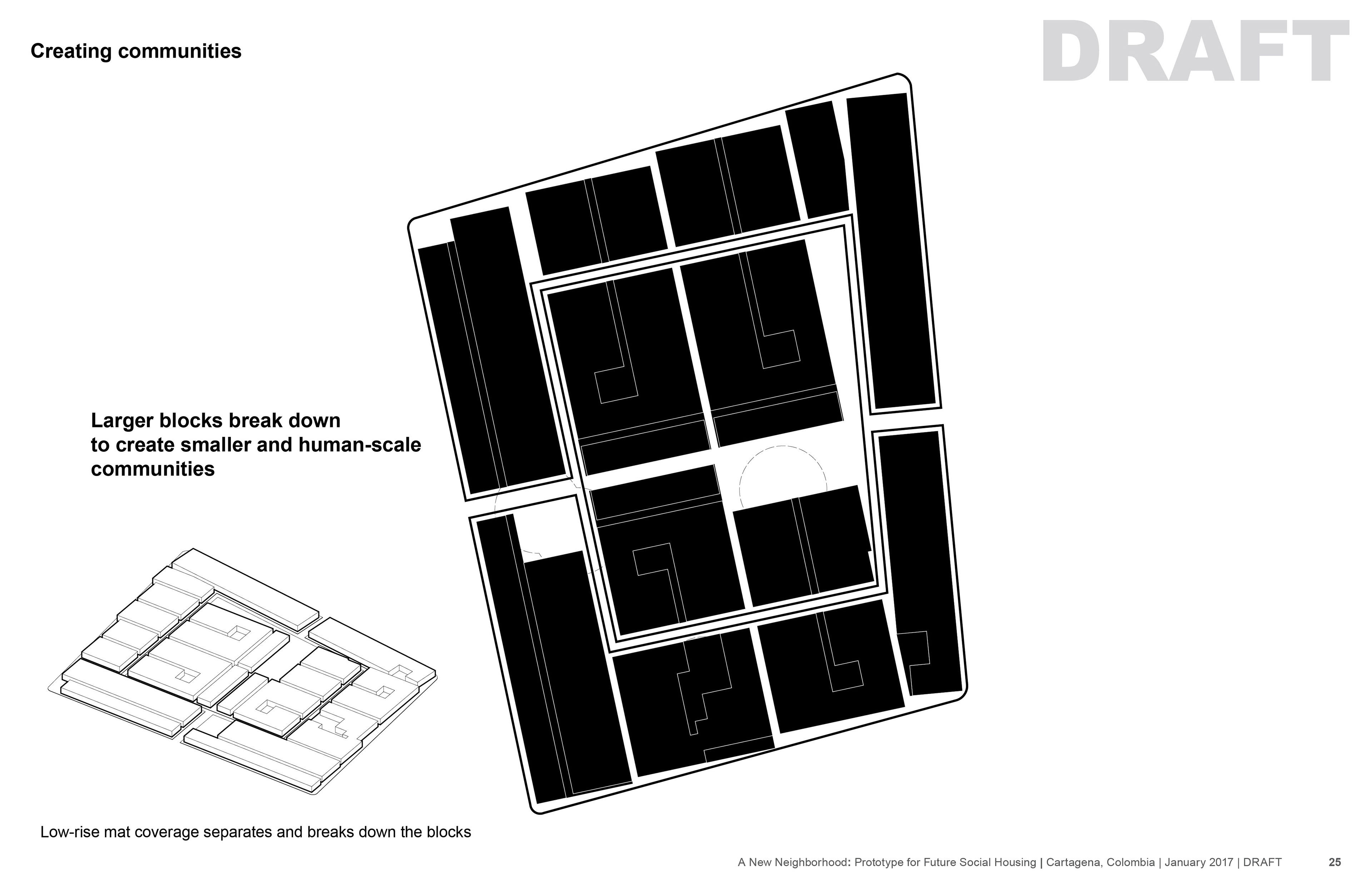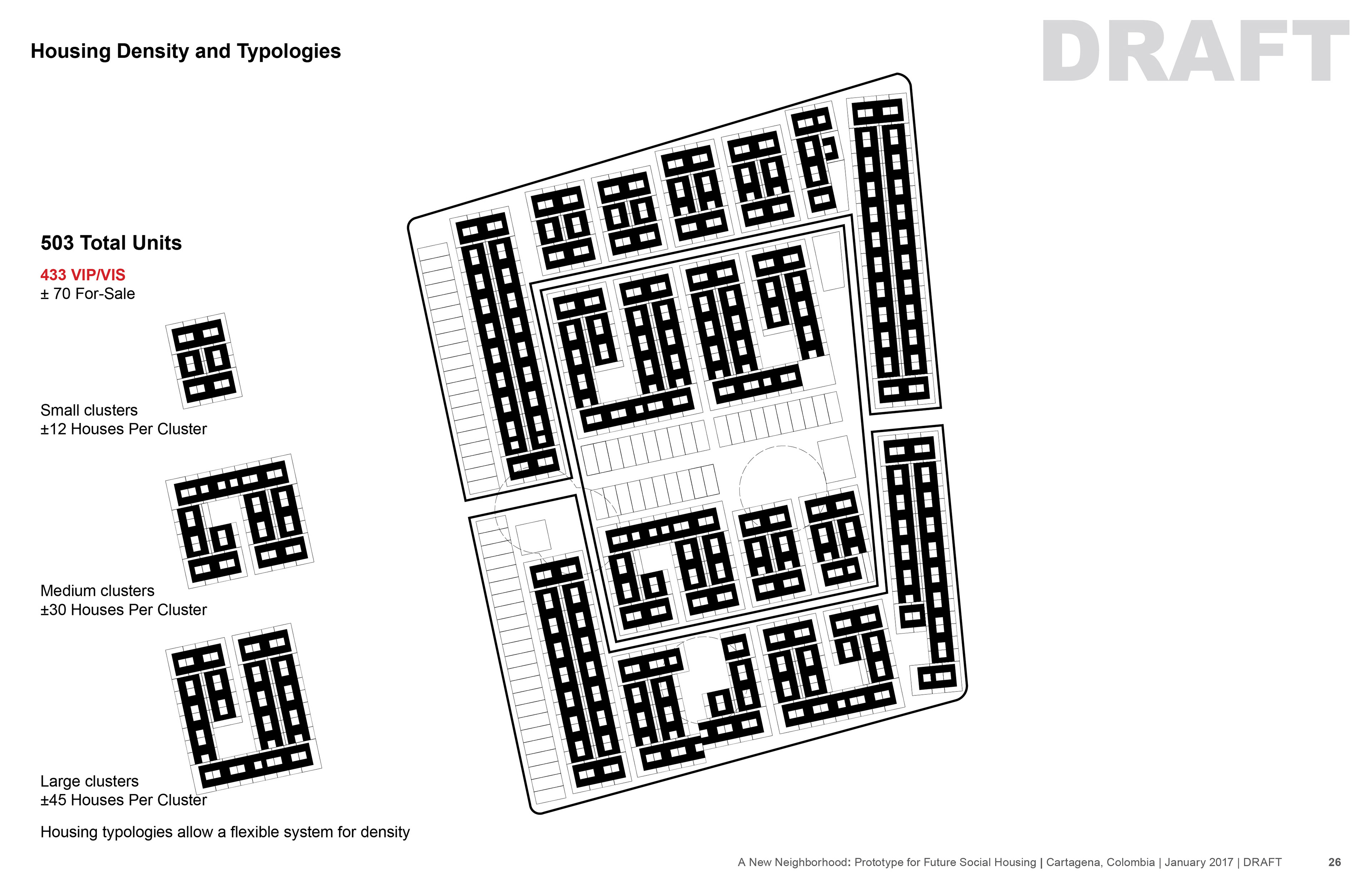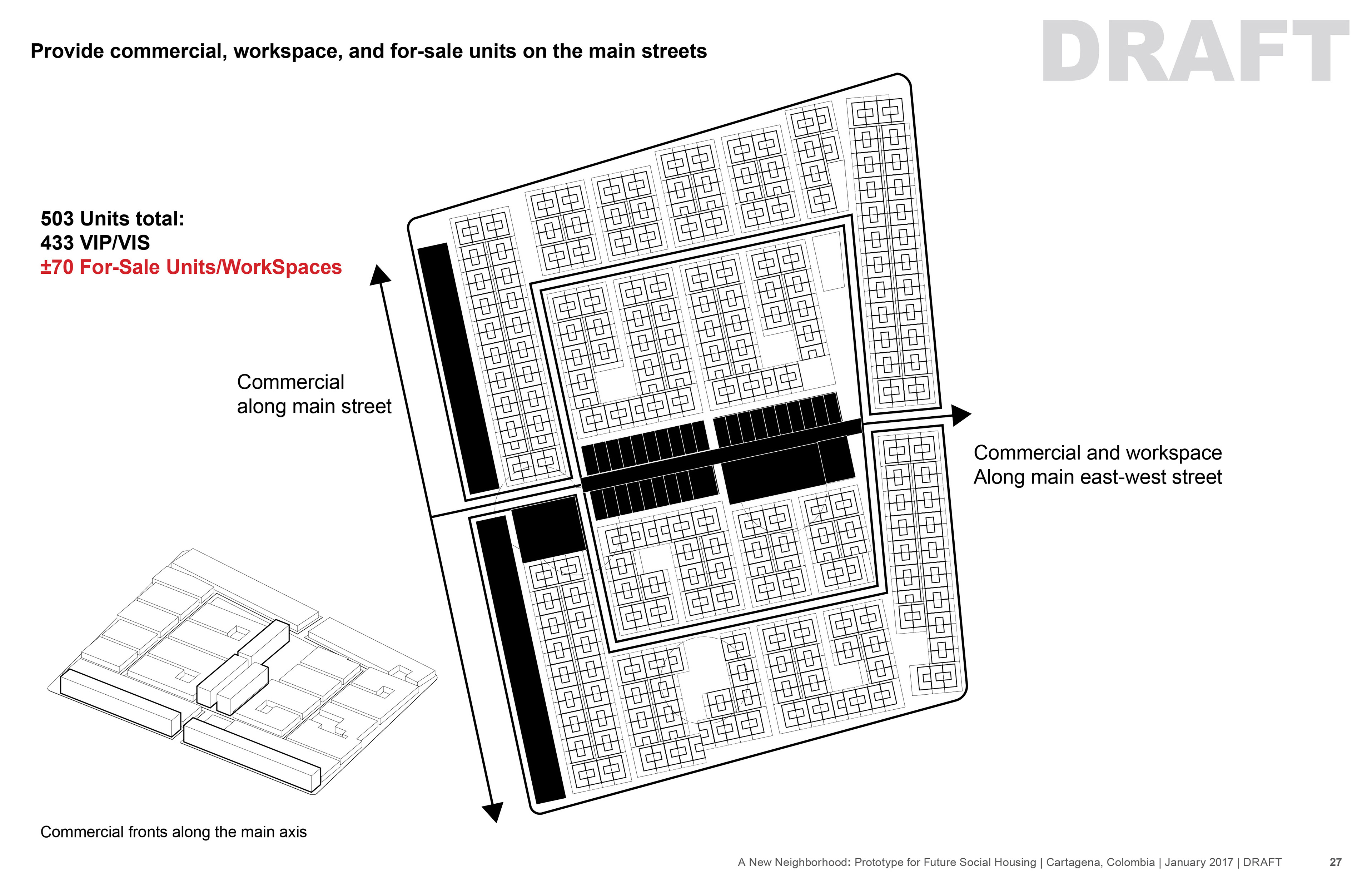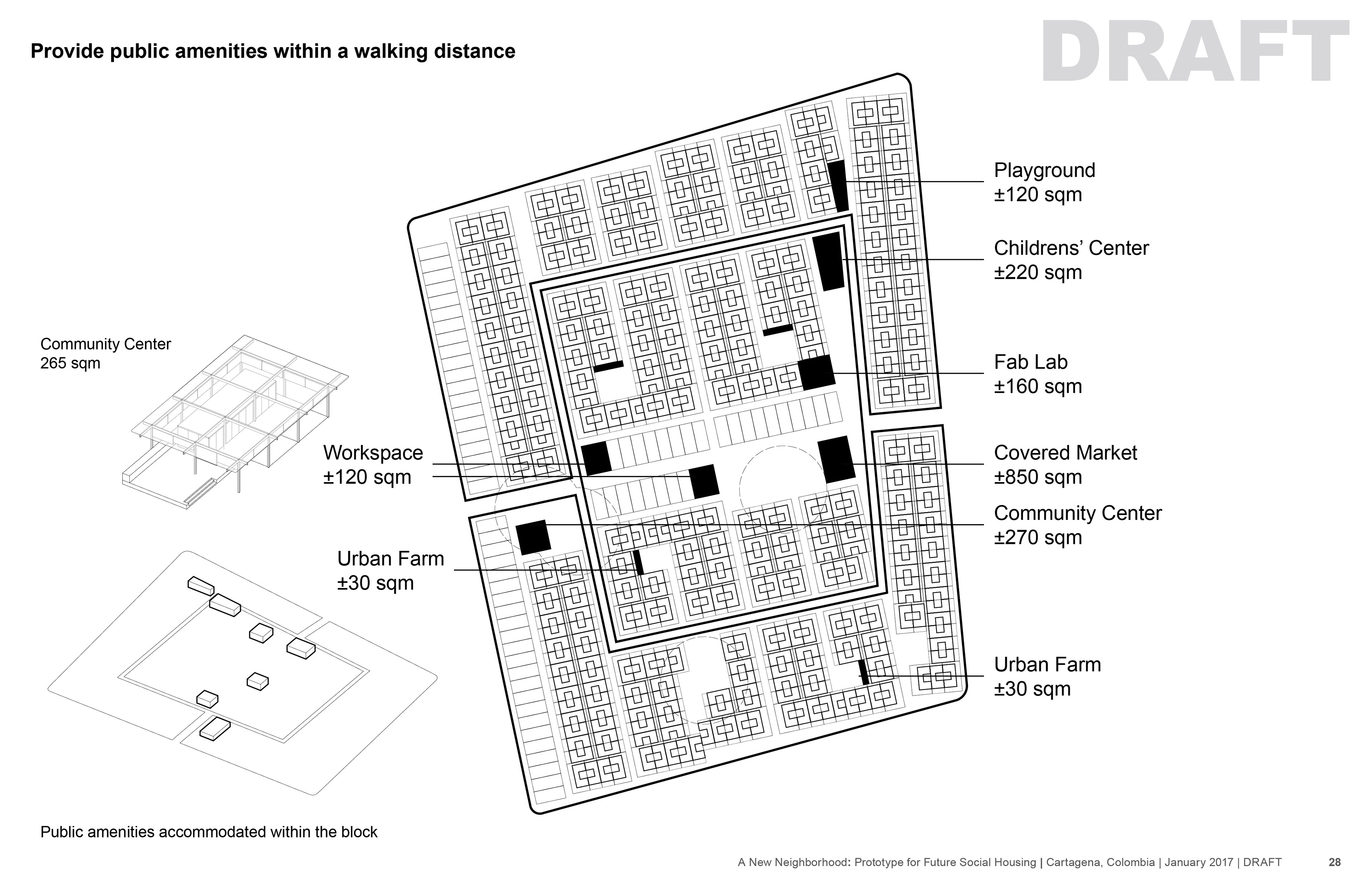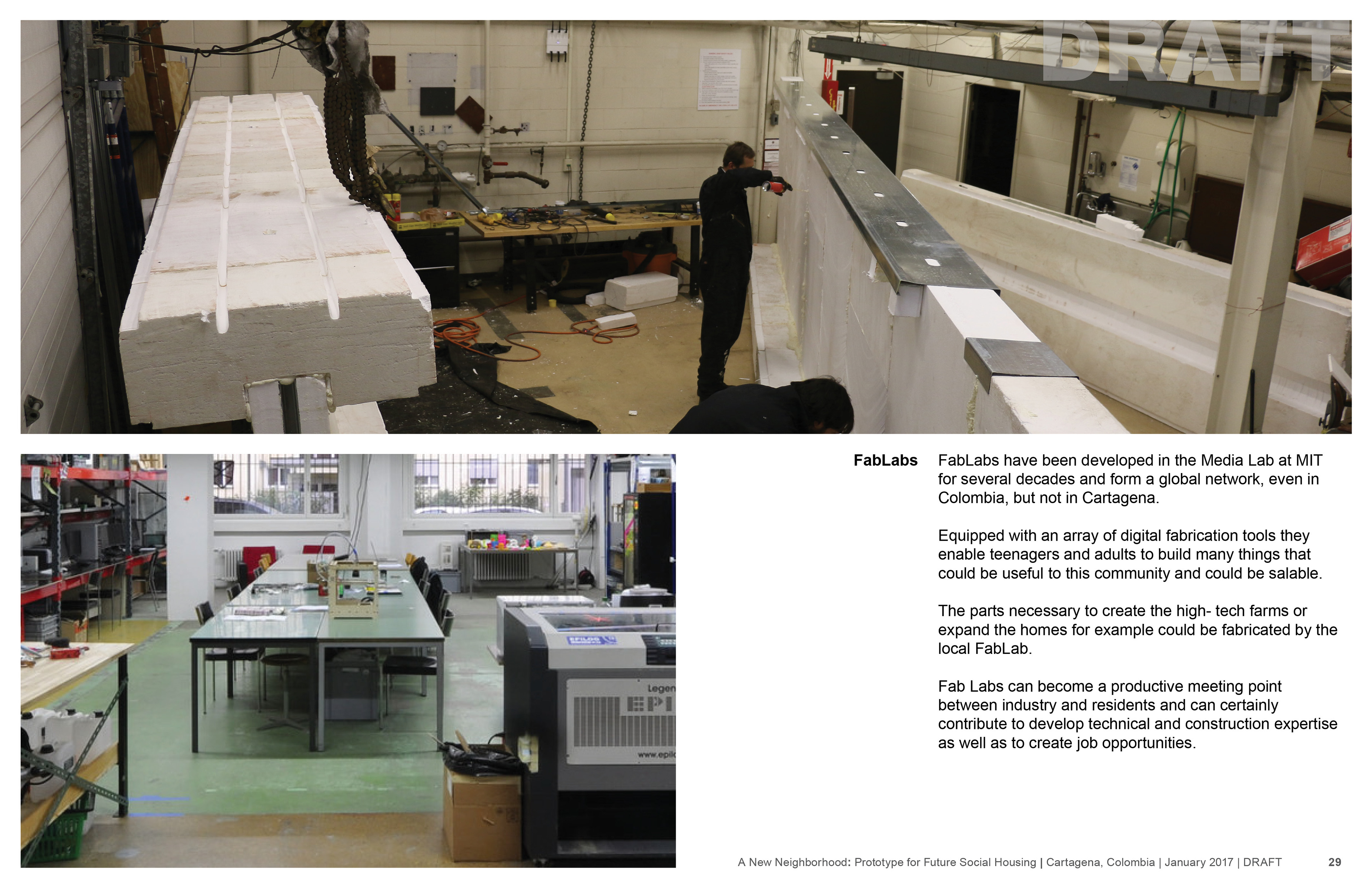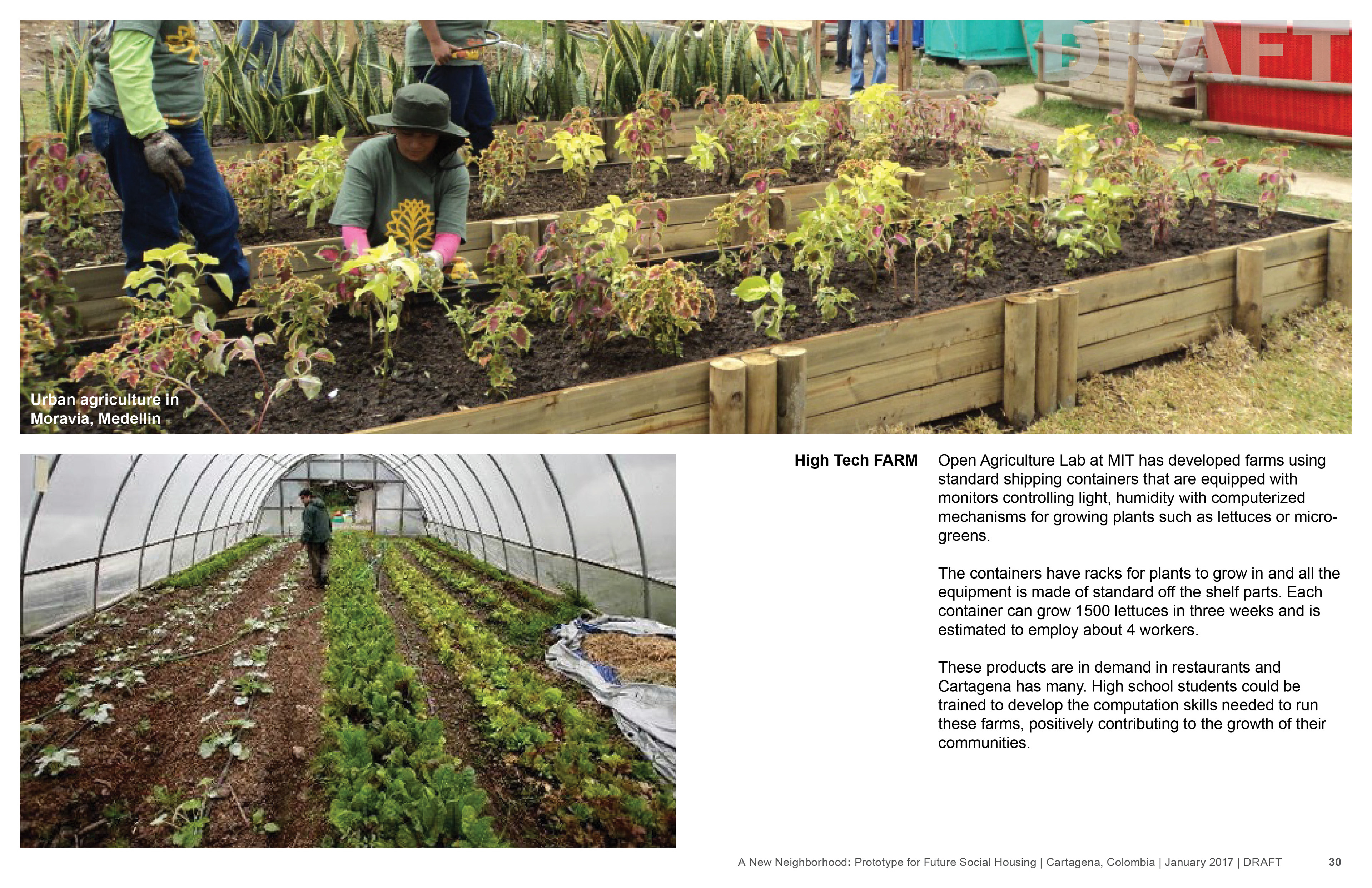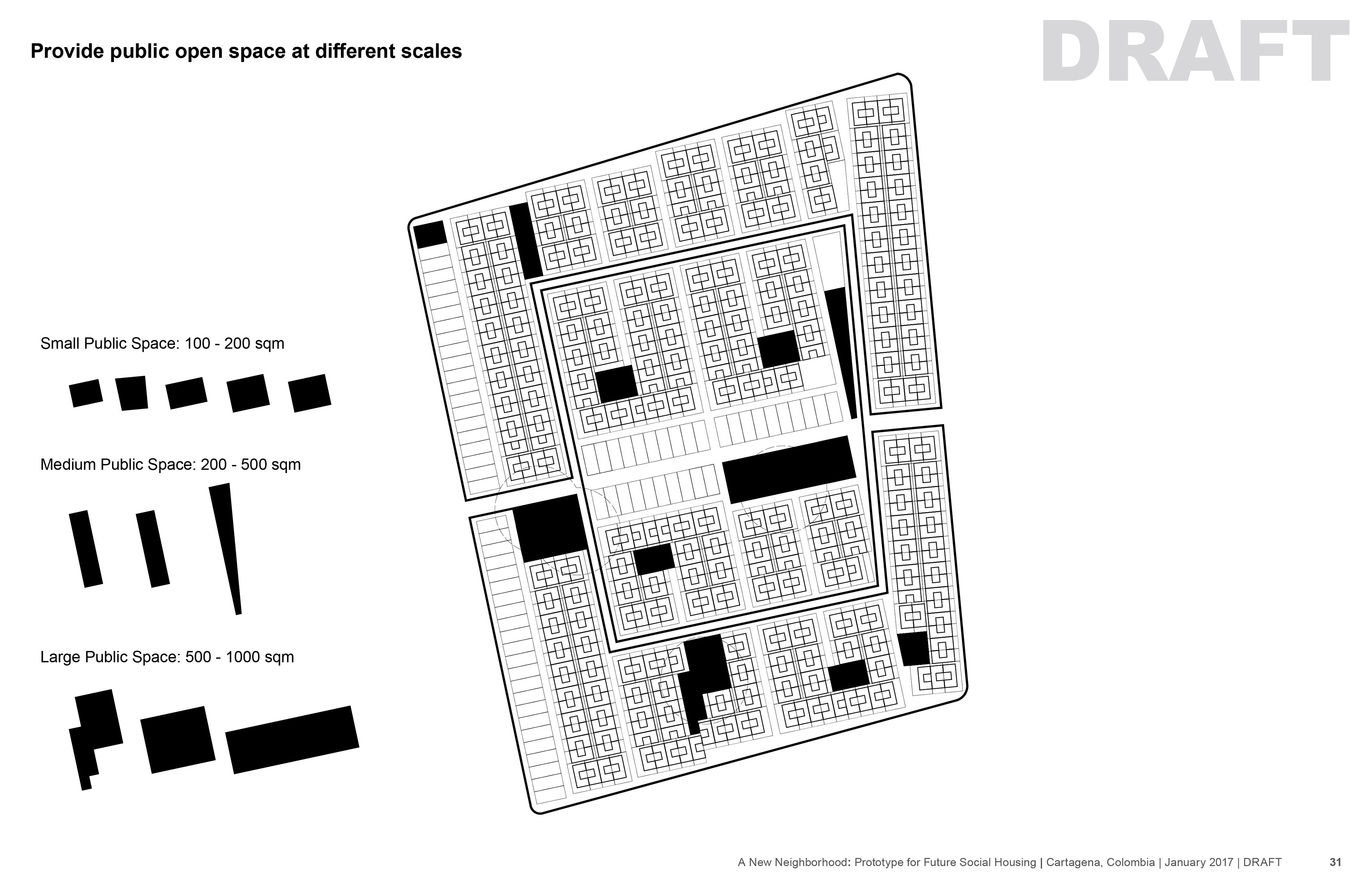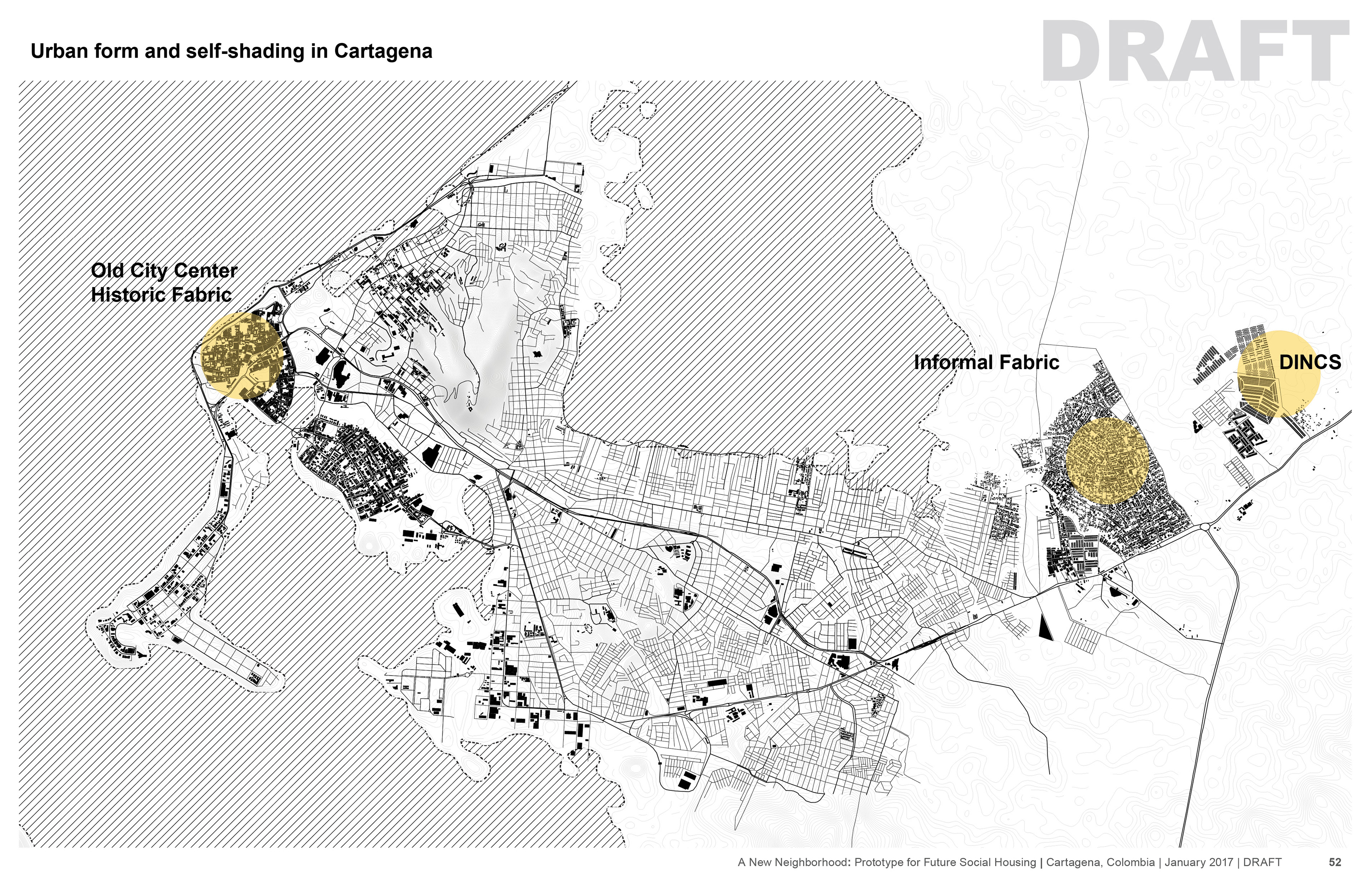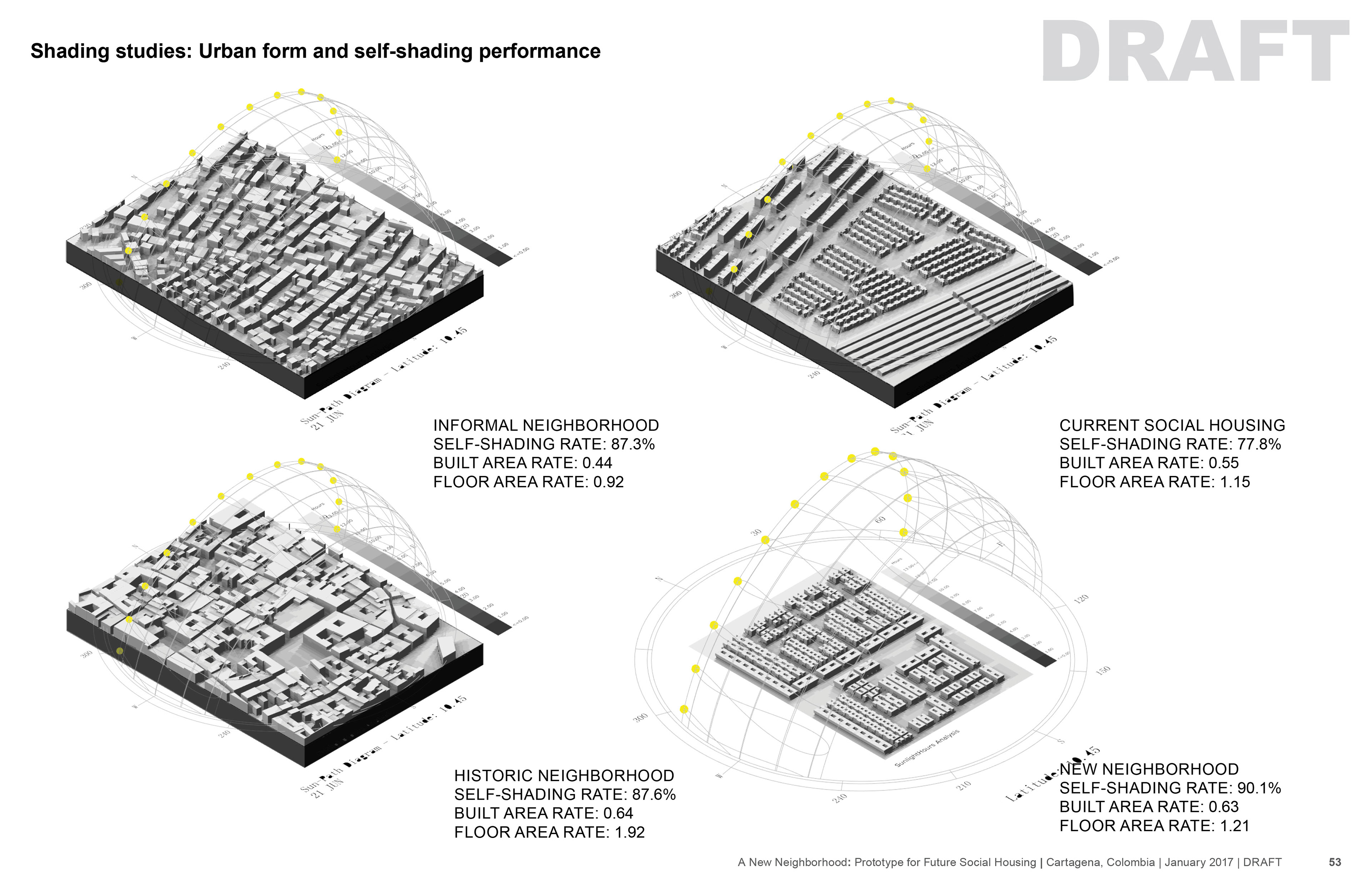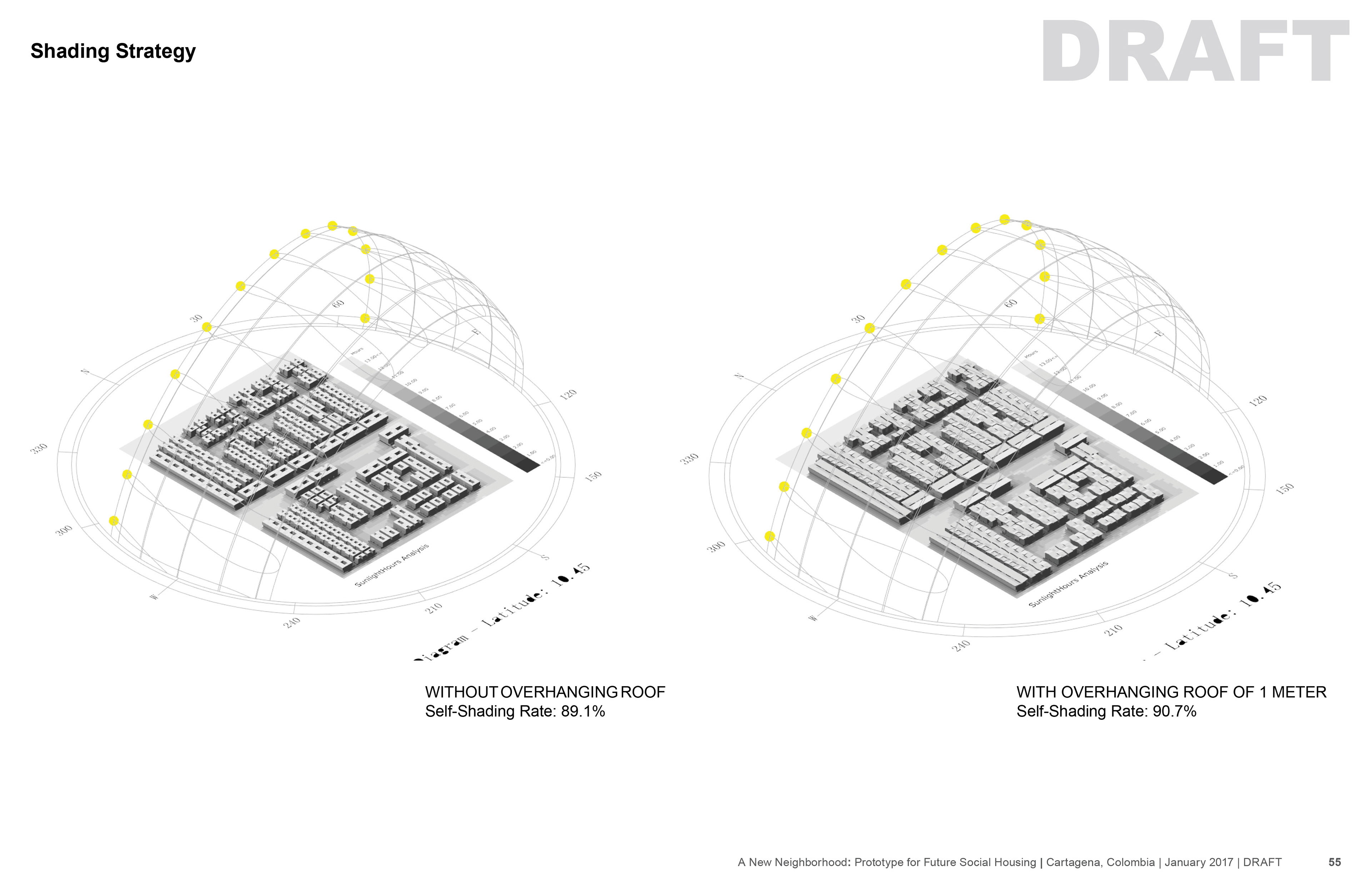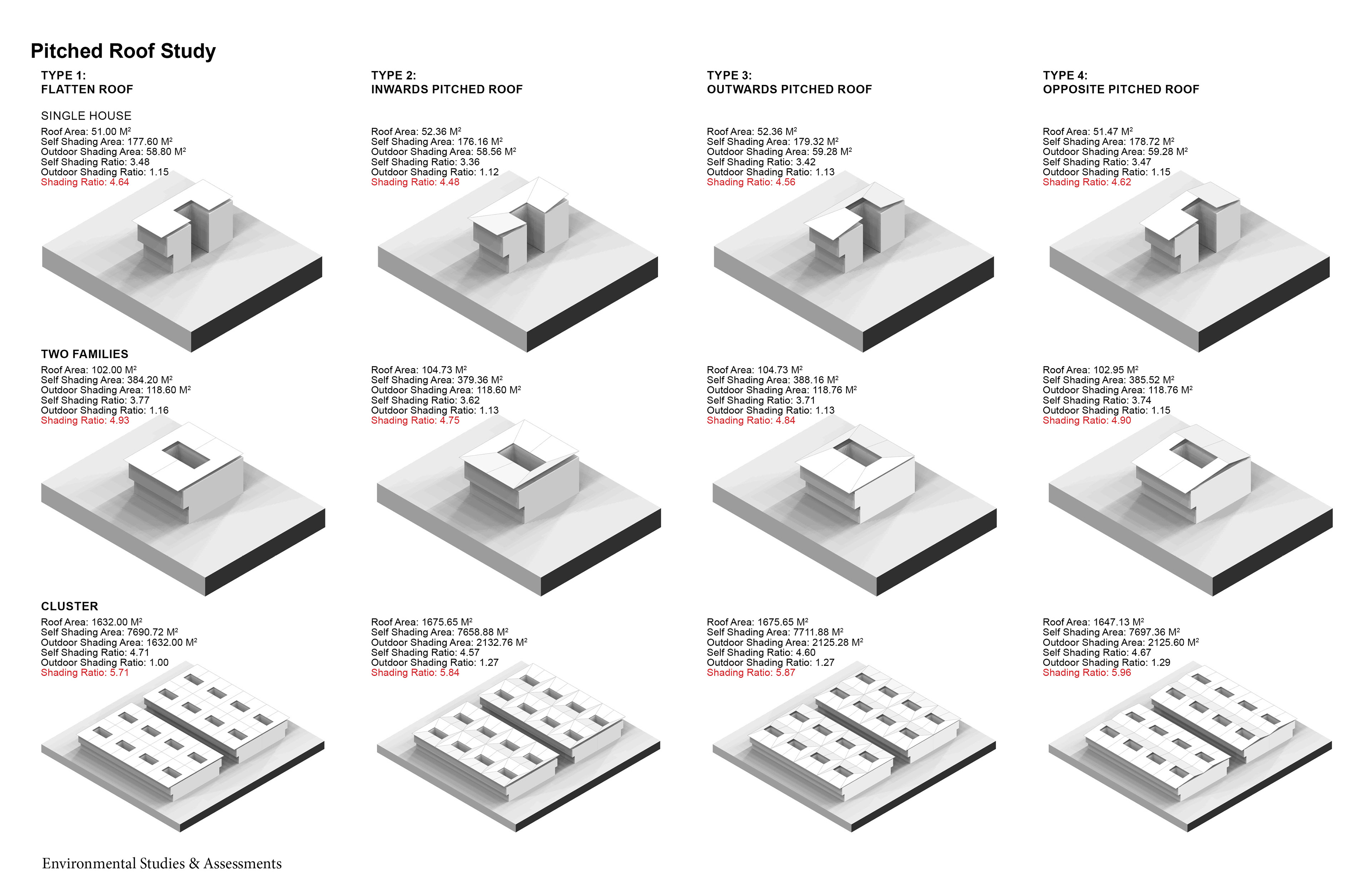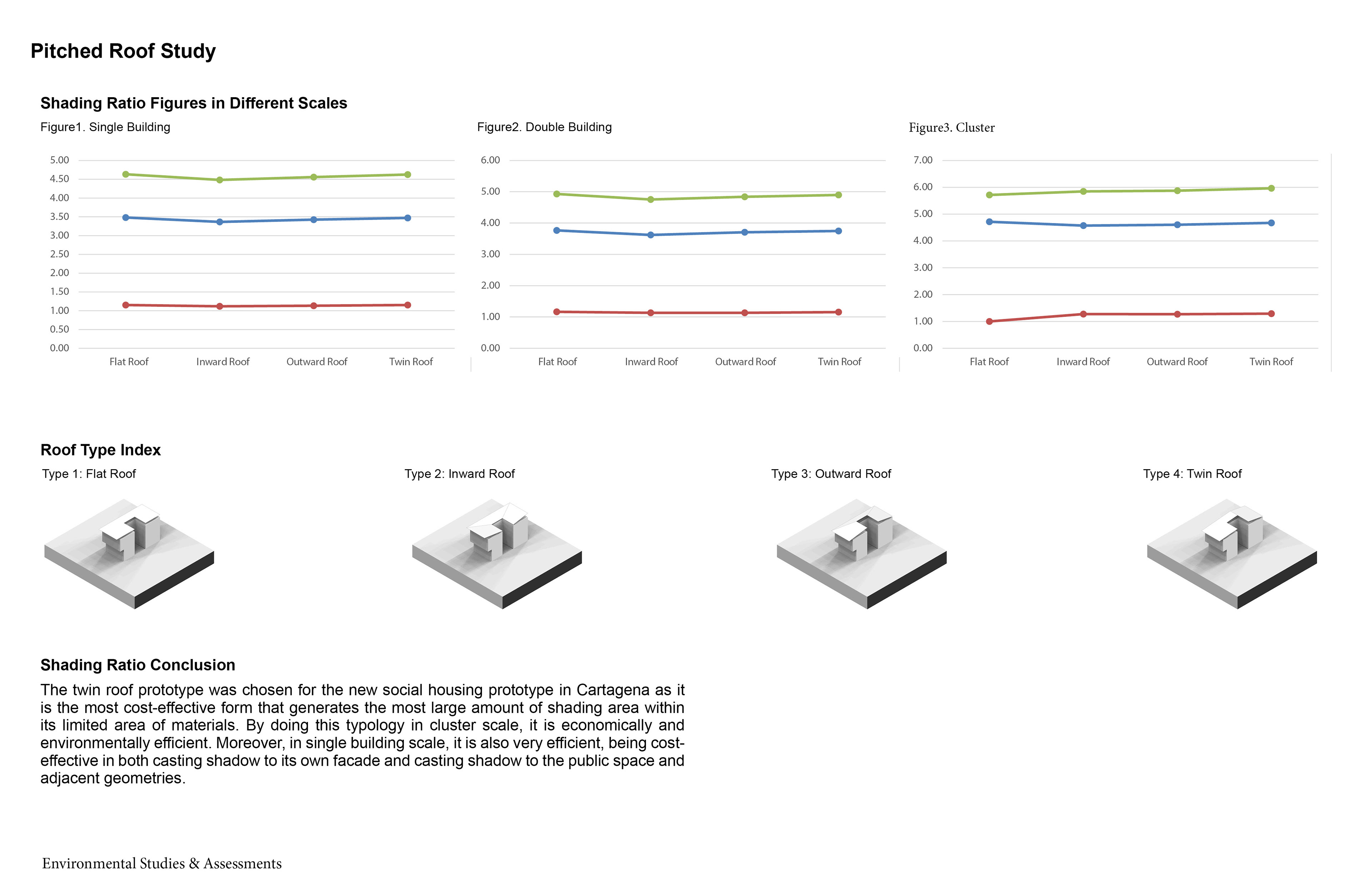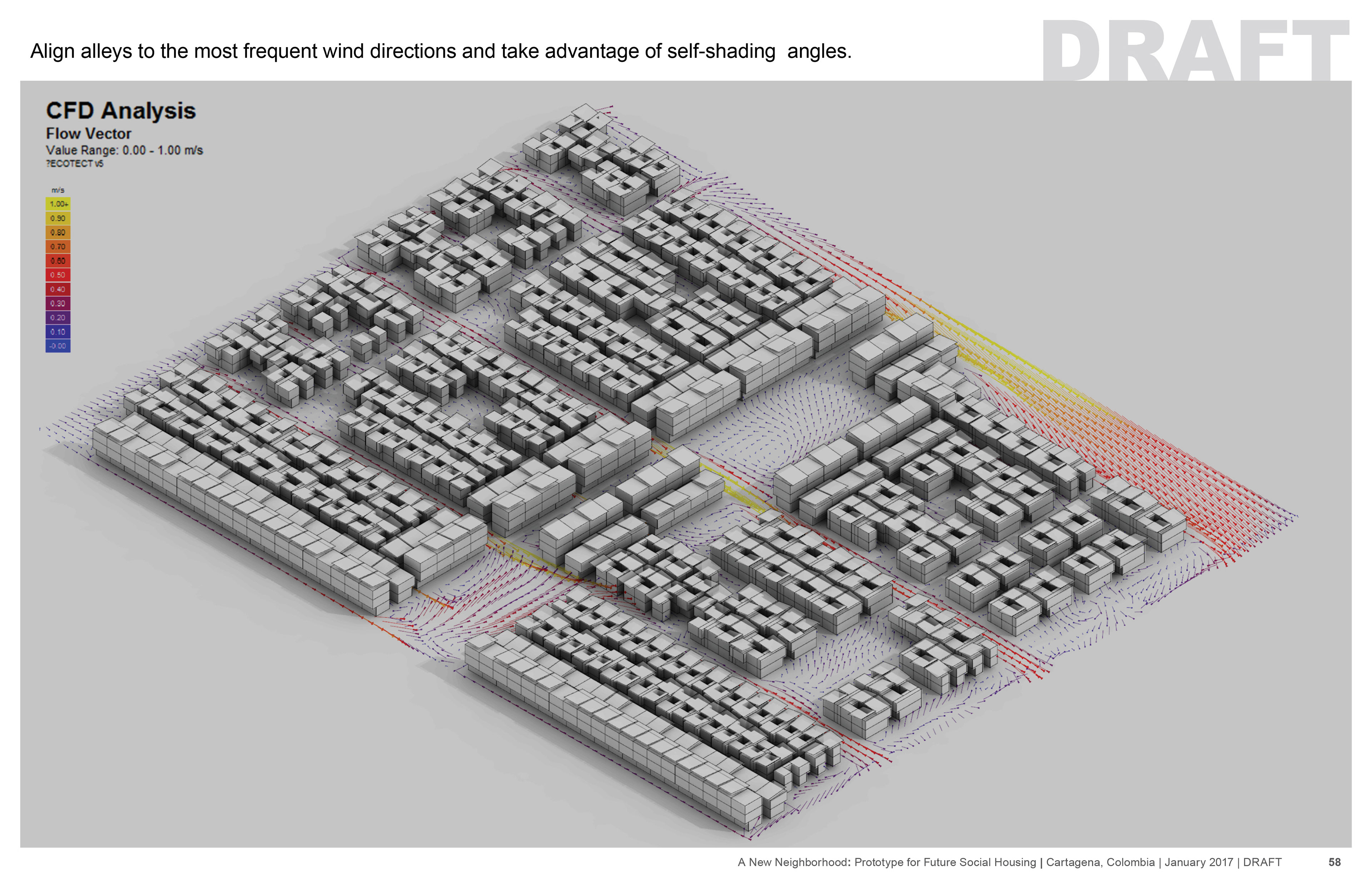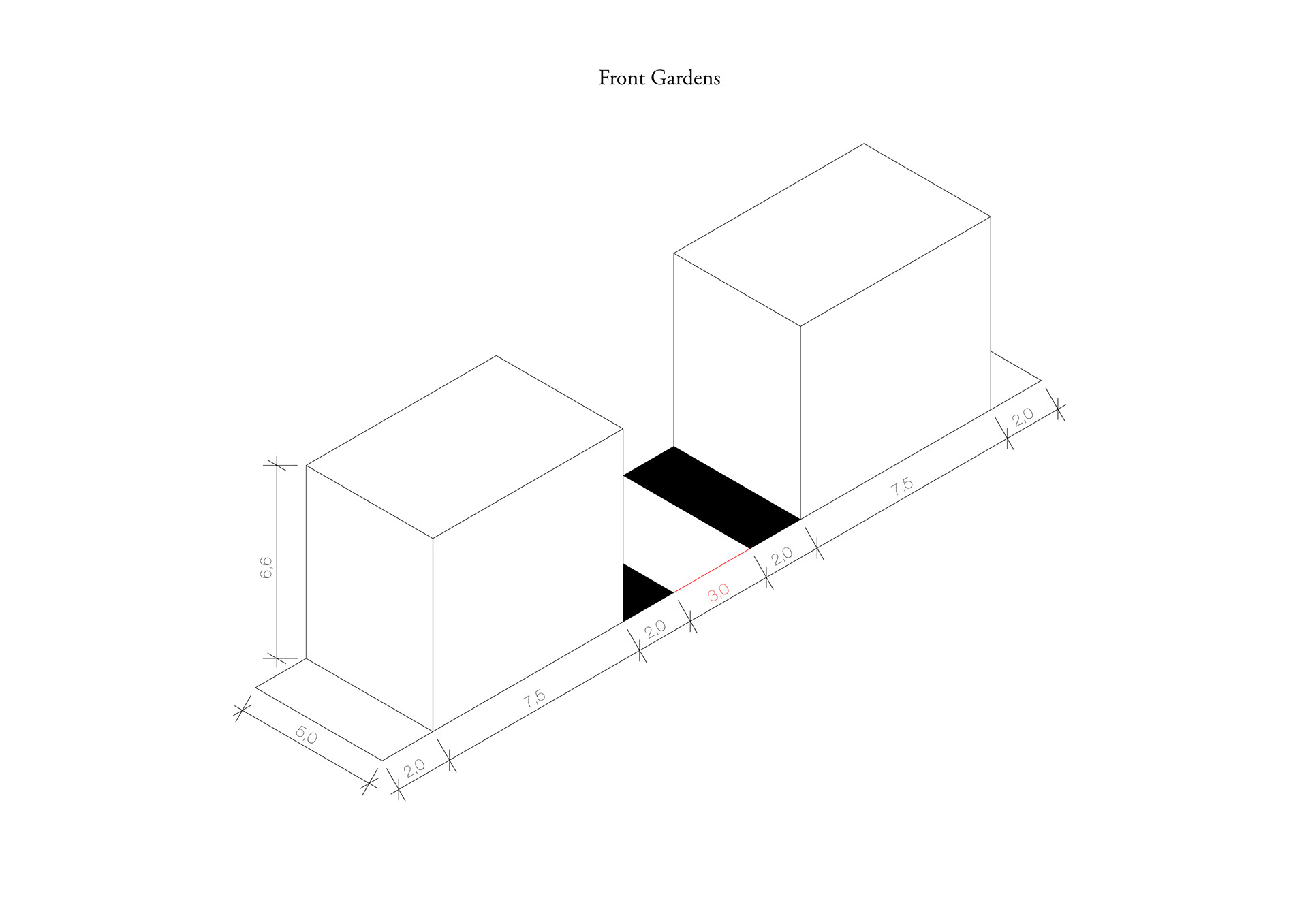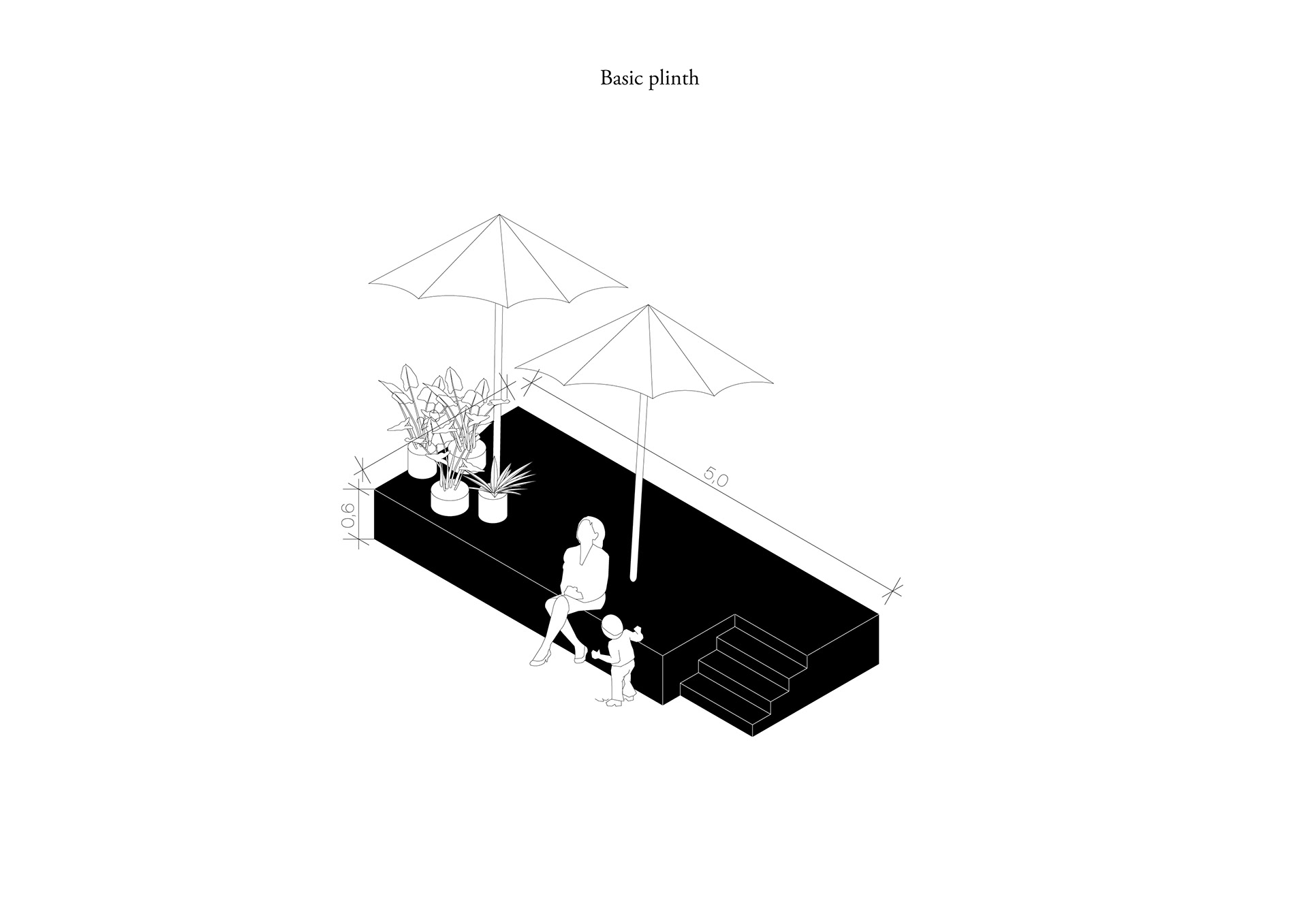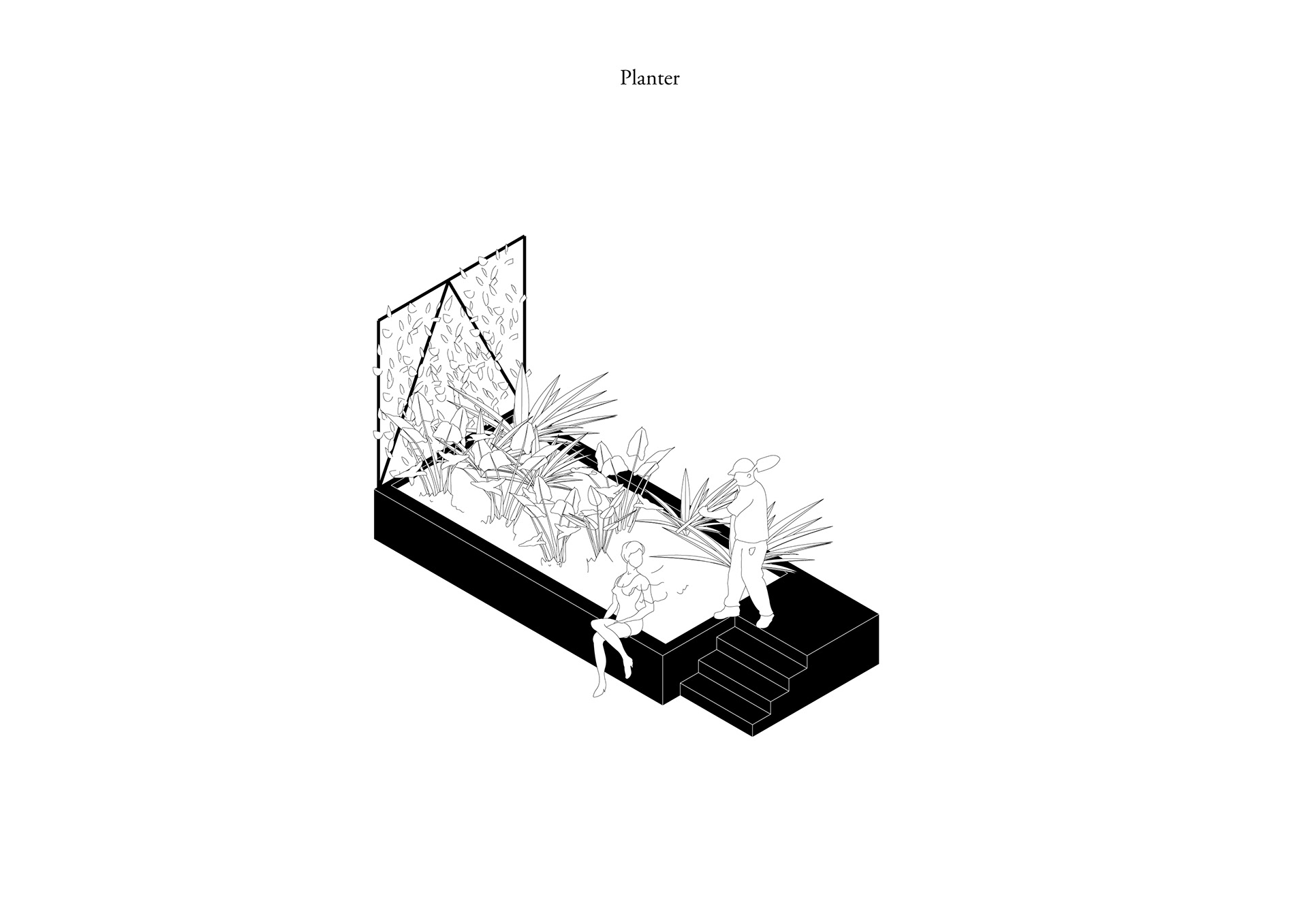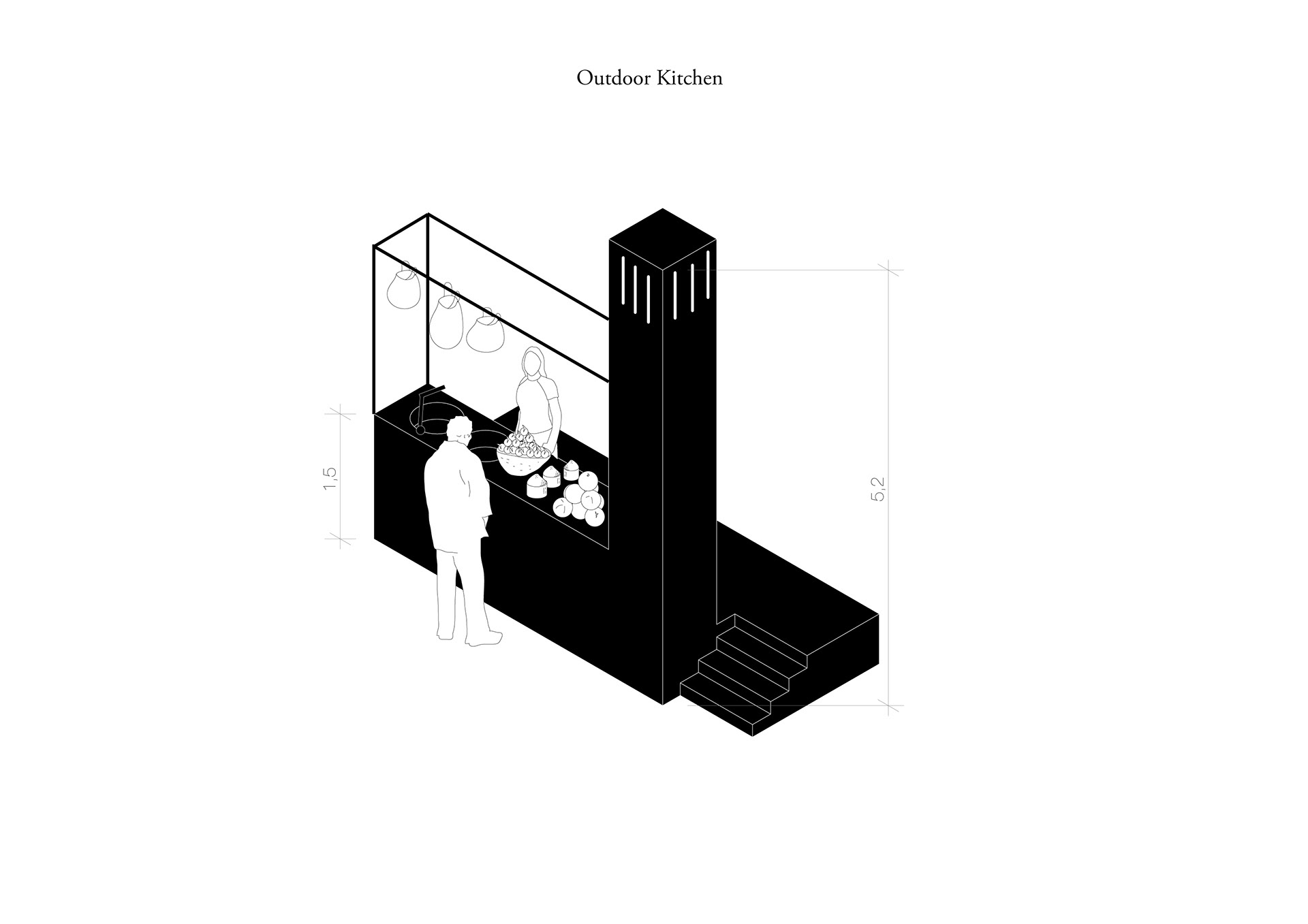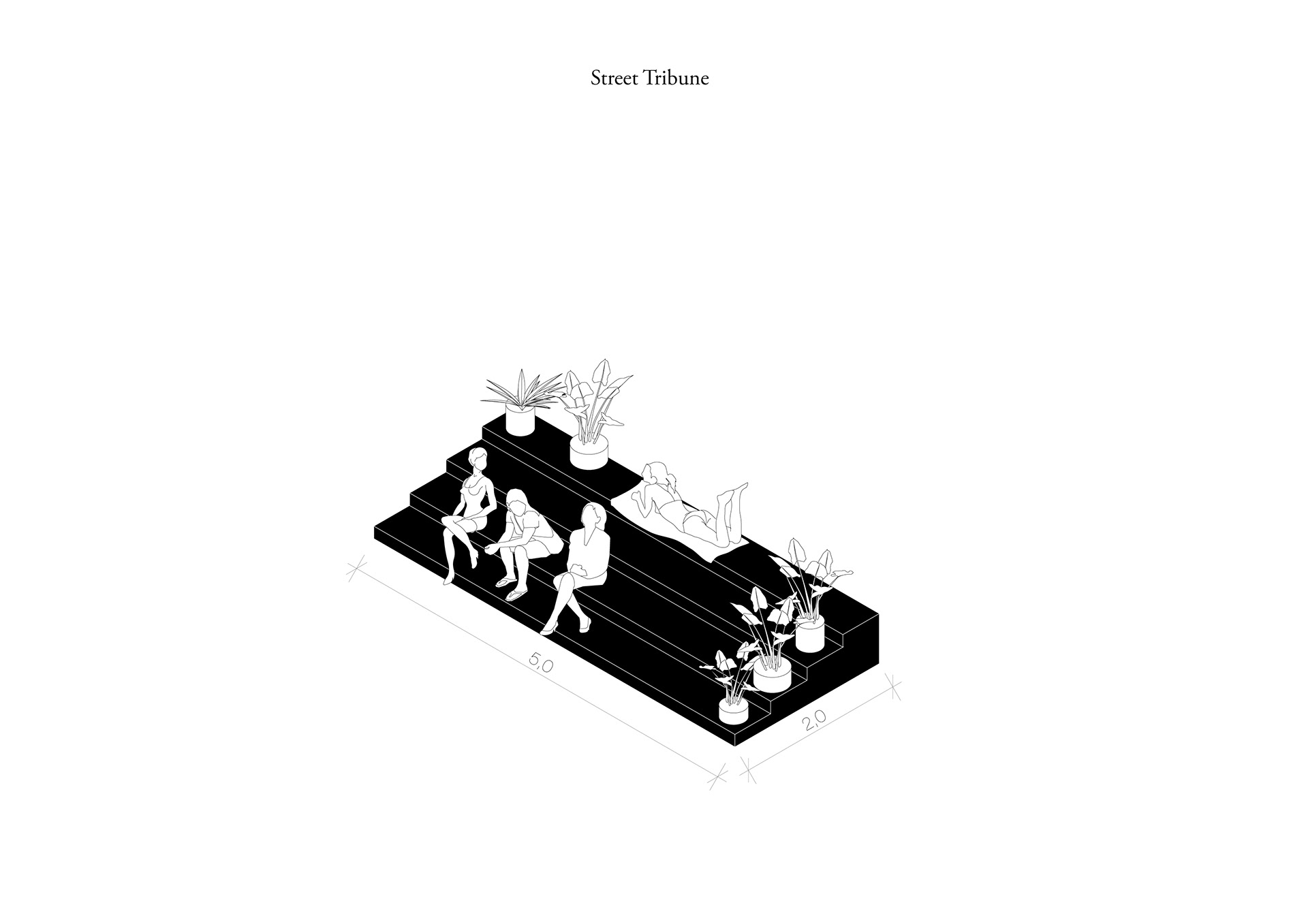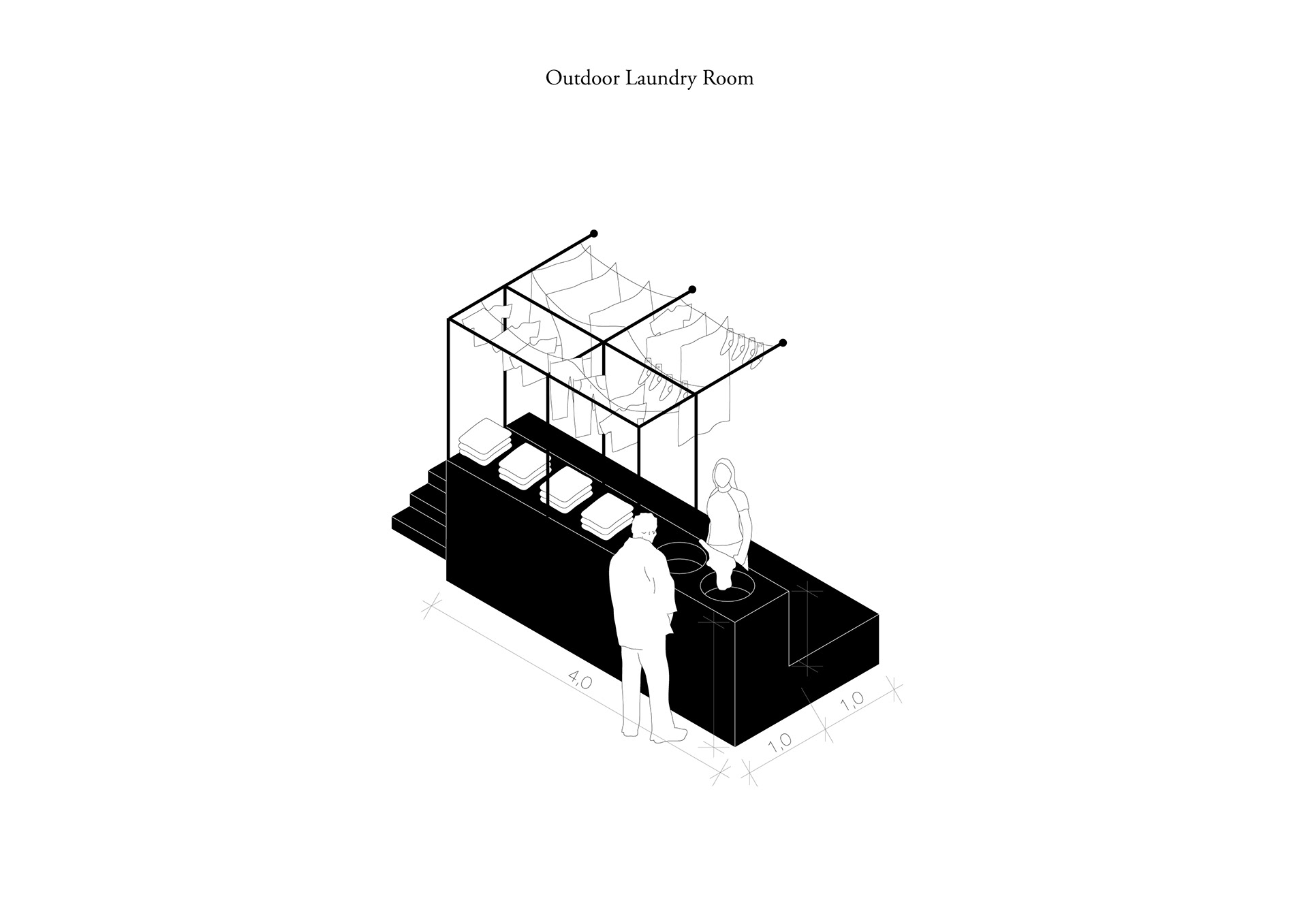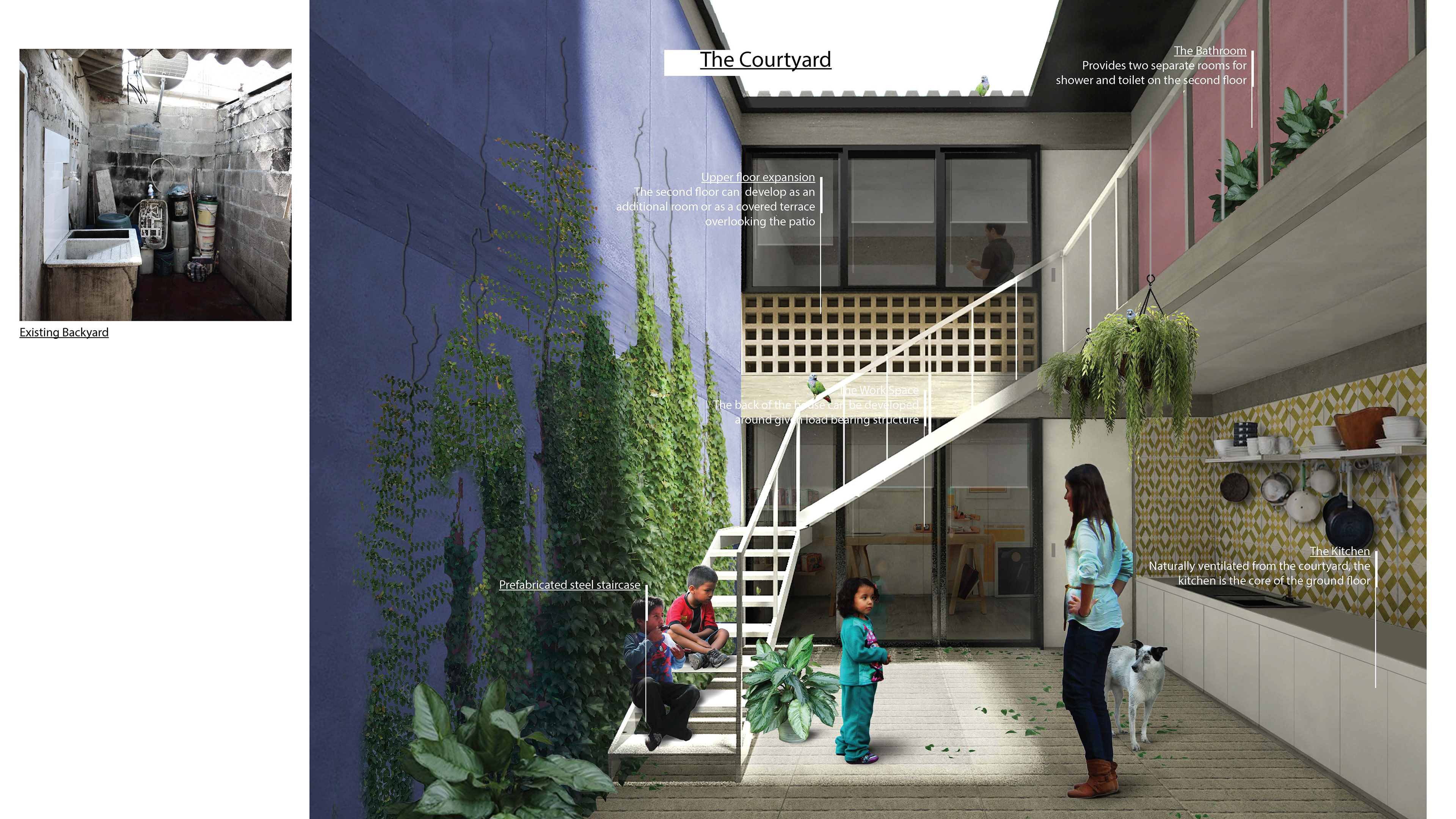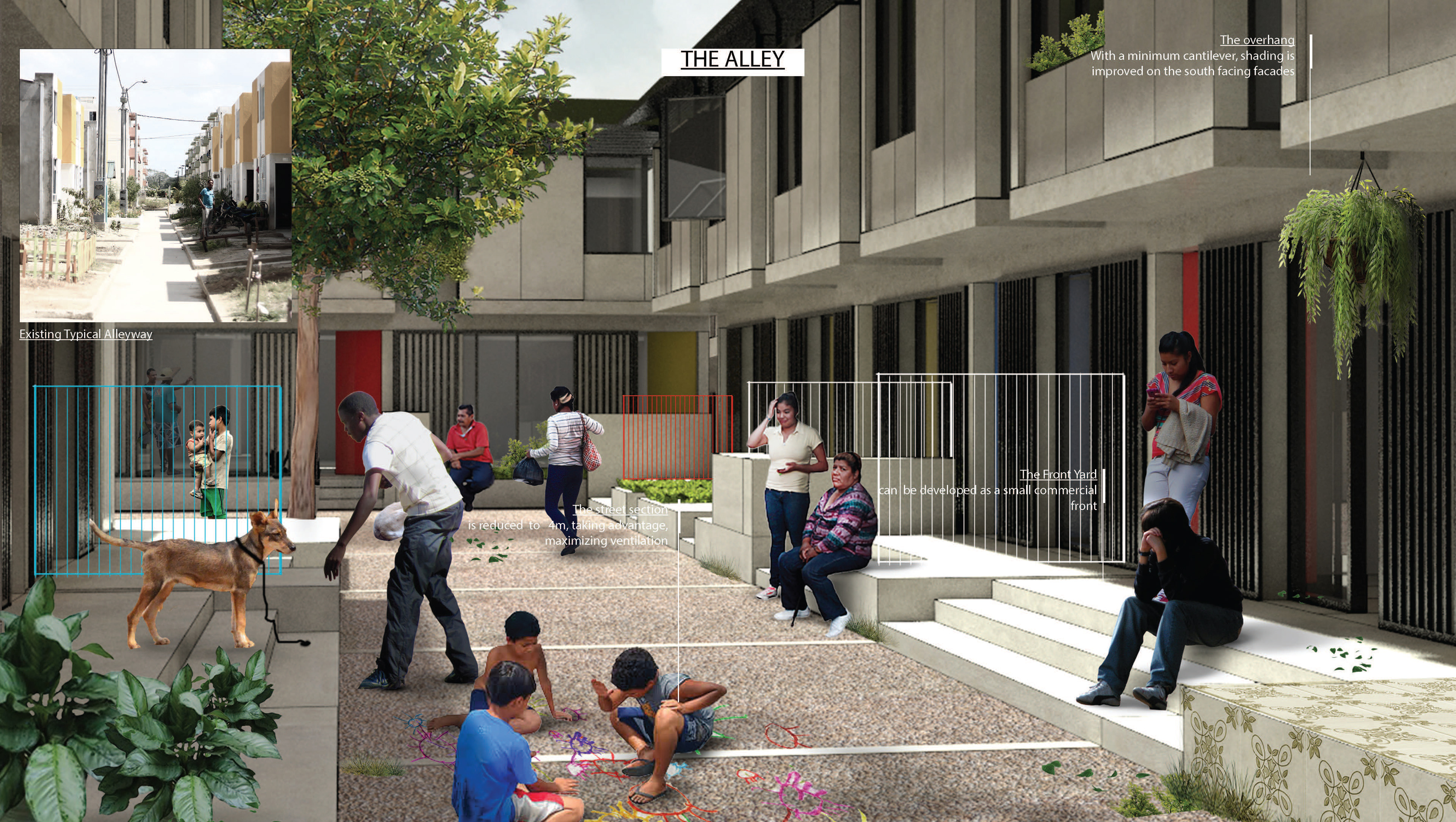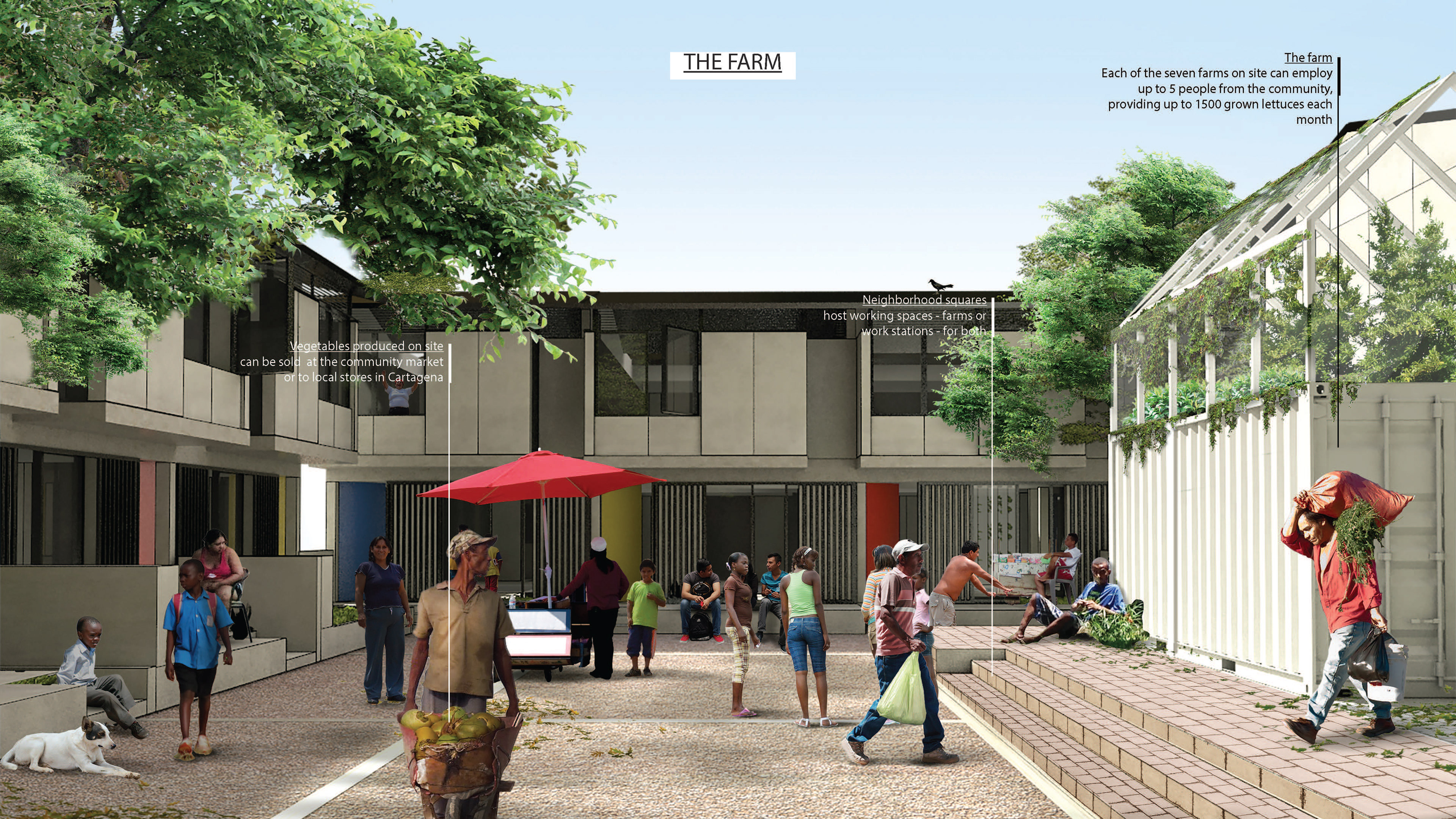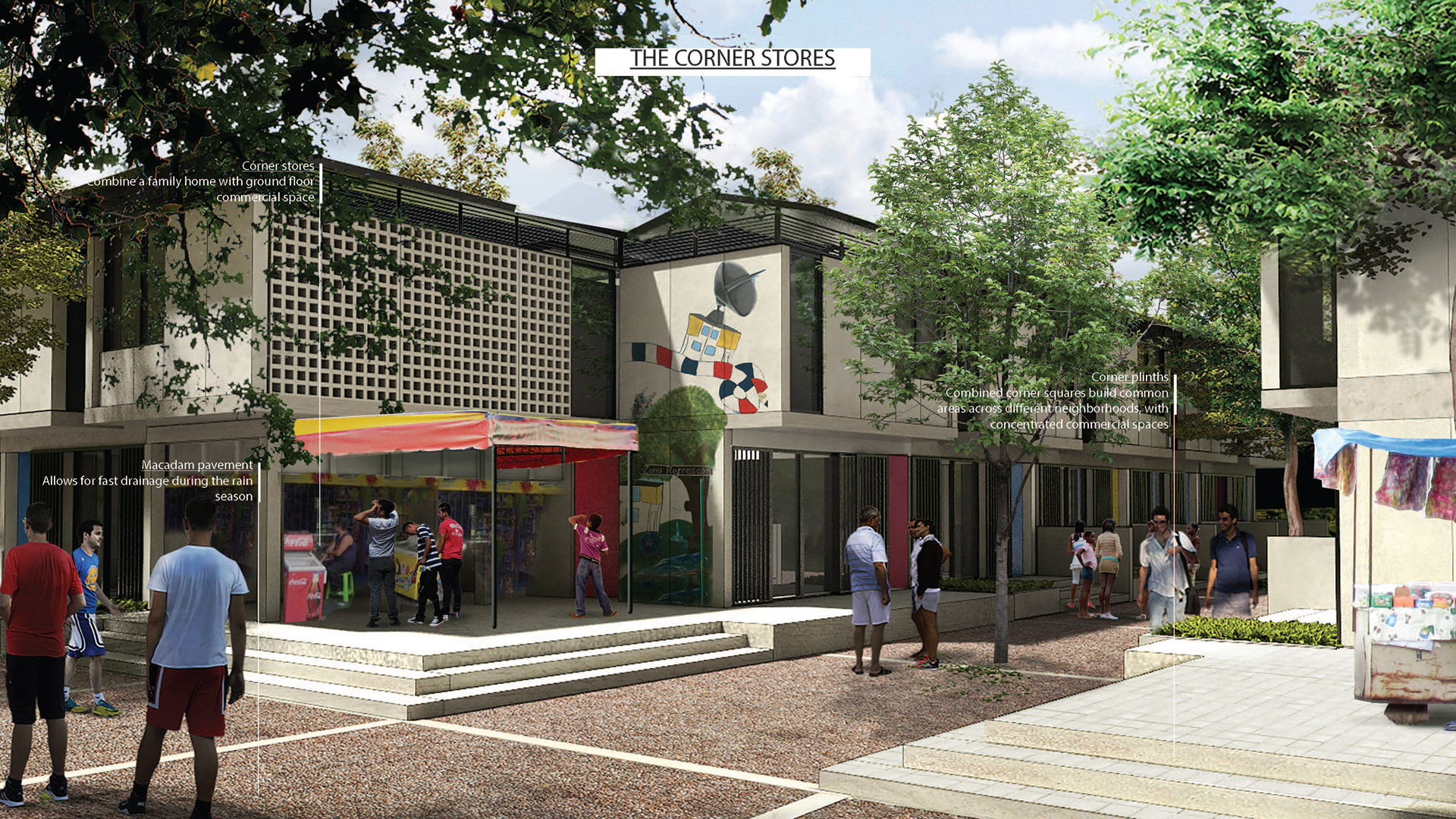NEW NEIGHBORHOOD, CARTAGENA, COLOMBIA
THE PROCESS//
The workshop was an intensive, hands-on process that brought together a diverse group of architecture and planning faculty and students. Our team collaborated closely with local university students and the staff of FMSD. The quality of the workshop was significantly enhanced by having access to a space in the local school in Ciudad Bicentenario during their holidays. This daily immersion in the environment and its operations proved invaluable. Four students from local universities supported the workshop by providing critical information about the renovations and additions made to the houses by the community. Their report highlighted the importance of understanding the use of rear setbacks and documented how homeowners personalized their interior and exterior spaces to express their identity. The FMSD administration and staff provided essential insights into building codes, construction costs, and current building practices. These contributions were crucial to the productivity and success of our work. The workshop process was further enriched by the preliminary findings of the Resilient Cities Housing Initiative (RCHI) research, led by Professor Larry Vale. His team conducted fieldwork on the social, cultural, and economic aspects of the population living in Ciudad Bicentenario.
The workshop was an intensive, hands-on process that brought together a diverse group of architecture and planning faculty and students. Our team collaborated closely with local university students and the staff of FMSD. The quality of the workshop was significantly enhanced by having access to a space in the local school in Ciudad Bicentenario during their holidays. This daily immersion in the environment and its operations proved invaluable. Four students from local universities supported the workshop by providing critical information about the renovations and additions made to the houses by the community. Their report highlighted the importance of understanding the use of rear setbacks and documented how homeowners personalized their interior and exterior spaces to express their identity. The FMSD administration and staff provided essential insights into building codes, construction costs, and current building practices. These contributions were crucial to the productivity and success of our work. The workshop process was further enriched by the preliminary findings of the Resilient Cities Housing Initiative (RCHI) research, led by Professor Larry Vale. His team conducted fieldwork on the social, cultural, and economic aspects of the population living in Ciudad Bicentenario.
KEY LEARNING//
Through this workshop, students engaged deeply with the local context and stakeholders, including members of the FMSD and local university students. Together, we developed a master plan, public realm strategies, and innovative housing typologies. These solutions challenged conventional housing models, aiming to enhance community resilience by incorporating livelihood spaces within the neighborhood. The proposed housing typologies offer transferable ideas on flexibility, climate adaptation, and mixed uses, potentially influencing macroproject policy guidelines in Colombia.
Through this workshop, students engaged deeply with the local context and stakeholders, including members of the FMSD and local university students. Together, we developed a master plan, public realm strategies, and innovative housing typologies. These solutions challenged conventional housing models, aiming to enhance community resilience by incorporating livelihood spaces within the neighborhood. The proposed housing typologies offer transferable ideas on flexibility, climate adaptation, and mixed uses, potentially influencing macroproject policy guidelines in Colombia.
NEIGHBORHOOD PLANNING//
The existing and developing blocks are almost identical, with long rows of repetitive housing units that hinder the creation of a sense of community. Our proposal focuses on reducing the size of these housing blocks to foster neighborhood identity, community spirit, and safer streets and communal spaces. We preserved the large mature trees on the site, enhancing the neighborhood's identity. The central market space serves as the focal point for this super-block, surrounded by three-story shop-houses with continuous ground-level retail spaces. Via Troncal del Bicentenario is also lined with ground-level retail, with two-story houses above featuring balconies facing the boulevard. These three-floor units are intended for sale. A loop road for pedestrians and cars serves the entire block, with vehicle access to the central plaza allowed during reserved hours. Smaller courtyards in the center of the blocks accommodate farms or other shared activities, while special wider properties on corners encourage retail use. Compact planning and utility lines help control infrastructure costs.
The existing and developing blocks are almost identical, with long rows of repetitive housing units that hinder the creation of a sense of community. Our proposal focuses on reducing the size of these housing blocks to foster neighborhood identity, community spirit, and safer streets and communal spaces. We preserved the large mature trees on the site, enhancing the neighborhood's identity. The central market space serves as the focal point for this super-block, surrounded by three-story shop-houses with continuous ground-level retail spaces. Via Troncal del Bicentenario is also lined with ground-level retail, with two-story houses above featuring balconies facing the boulevard. These three-floor units are intended for sale. A loop road for pedestrians and cars serves the entire block, with vehicle access to the central plaza allowed during reserved hours. Smaller courtyards in the center of the blocks accommodate farms or other shared activities, while special wider properties on corners encourage retail use. Compact planning and utility lines help control infrastructure costs.
ENVIRONMENTAL CONSIDERATIONS//
Cartagena's climate can reach up to 29°C (84°F) with 94% humidity during the hottest month. The current neighborhoods are not optimized for wind flow or shade, resulting in poor thermal comfort. Existing houses are often uncomfortably hot, especially at night, due to a lack of roof insulation, limited cross-ventilation, and no roof overhangs. We conducted a rigorous comparative assessment of existing neighborhoods, including the walled city, to set criteria for site planning and housing design. Environmental analysis was completed for proposed streets, community spaces, and housing typologies to ensure self-shading and optimize natural ventilation.
Cartagena's climate can reach up to 29°C (84°F) with 94% humidity during the hottest month. The current neighborhoods are not optimized for wind flow or shade, resulting in poor thermal comfort. Existing houses are often uncomfortably hot, especially at night, due to a lack of roof insulation, limited cross-ventilation, and no roof overhangs. We conducted a rigorous comparative assessment of existing neighborhoods, including the walled city, to set criteria for site planning and housing design. Environmental analysis was completed for proposed streets, community spaces, and housing typologies to ensure self-shading and optimize natural ventilation.
TEAM//
Adele Naude Santos, Debora Mesa Molina, Giovanni Bellotti, Max Jarosz, Zain Karsan, Justin Lim, Daniel Marshall, Mackenzie Muhonen, Waishan Qiu, Maya Shopova, Angelos Siampakoulis, Manuela Uribe, Alexander Wiegering
Adele Naude Santos, Debora Mesa Molina, Giovanni Bellotti, Max Jarosz, Zain Karsan, Justin Lim, Daniel Marshall, Mackenzie Muhonen, Waishan Qiu, Maya Shopova, Angelos Siampakoulis, Manuela Uribe, Alexander Wiegering

